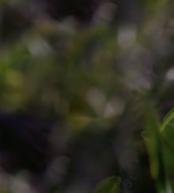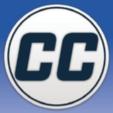Welcome to the December 2022 issue of













































As we approach the end of 2022, it’s time to take a look back at the year and take stock of where we’ve gone and where we’re going.
If we could sum the year up in one phrase, it would definitely be “re turn to live!” (emphasis on exclamation point). With one of the world’s largest trade shows starting the year in Las Vegas, the 2022 Internation al CES was an expectedly muted affair with attendance less than half of what it was when it was last held in 2020. And while it wasn’t immune to isolated Covid breakouts, the show proved that interest was high and the industry was eager to get back to in-person meetings.
The comfort level with live events gradually rose as the year wore on with the NAB Show in April and IBC in September logging smaller, but respectable attendance figures. Although the bar for expectations was admittedly low, there was a general consensus that said expectations were exceeded.
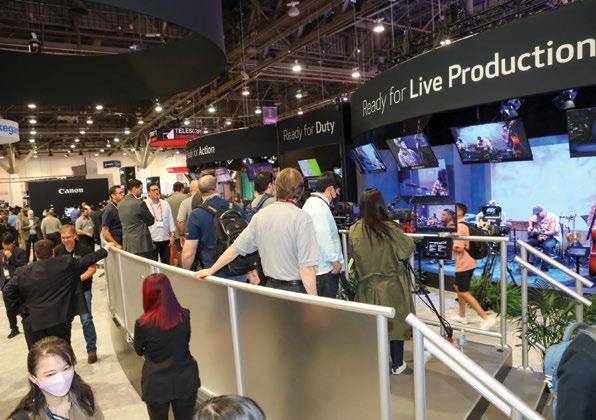
NextGen TV was also top of mind, with deployments continuing throughout the year and audience reach now exceeding more than half of all U.S. TV households. Hisense joined the ranks of TV makers offering NextGen TV sets and, perhaps more importantly, Sony announced that from here on, all of its TV sets will support ATSC 3.0. As for other consumer products for NextGen TV such as DVR set tops and dongles, the cupboard is still pretty bare, but hope springs anew with every CES.
Pearl TV and SInclair continued to lead in terms of developing new methodologies and “thinking outside the box,” with Sinclair moving forward on advancing ATSC 3.0 datacasting to cars, announcing a partnership with HyundaiMobis to develop new technology for this purpose.
NAB returned to Las Vegas for the first time in three years.
Speaking of cars, an acronym that’s been around for awhile but gained traction this year was FAST, free-ad supported television. The fast rise of FAST combines two elements that help media companies easily monetize their content: massive, legacy content libraries and the traditional concept of always on channels, proving that in 2022, at least, what was old was new again.
And finally, we couldn’t leave out the continuing trend of cord cutting and its impact on pay-TV. Nowhere was this better evident in the ongoing trials and tribulations between station groups and MVPDs with station blackouts happening at an annoying regularity in 2022. Expect this to continue into the new year; a very public demonstration of the rapidly changing, but sometimes tumultuous business of television today.
Tom Butts Content Directortom.butts@futurenet.com
FOLLOW US www.tvtech.com twitter.com/tvtech
CONTENT
Content Director
Tom Butts, tom.butts@futurenet.com Content Manager
Terry Scutt, terry.scutt@futurenet.com
Senior Content Producer
George Winslow, george.winslow@futurenet.com
Contributors Gary Arlen, Susan Ashworth, James Careless, Kevin Hilton, John Maxwell Hobbs, Craig Johnston, Bob Kovacs and Mark R. Smith
Production Managers Heather Tatrow, Nicole Schilling
Managing Design Director Nicole Cobban
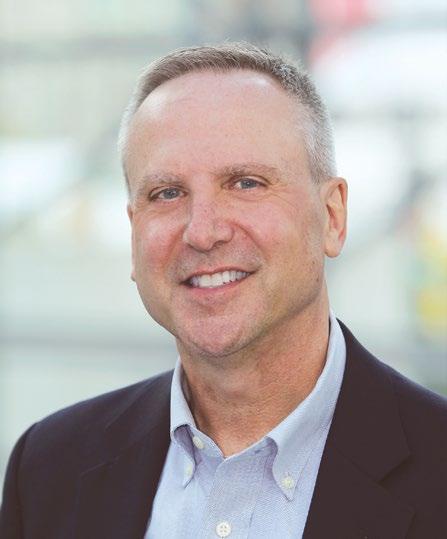
Senior Design Director Cliff Newman
Vice President, Sales, B2B Tech Group Adam Goldstein, adam.goldstein@futurenet.com

To subscribe, change your address, or check on your current account status, go to www.tvtechnology.com and click on About Us, email futureplc@computerfulfillment.com, call 888-266-5828, or write P.O. Box 8692, Lowell, MA 01853.
TV Technology is available for licensing. Contact the Licensing team to discuss partnership opportunities. Head of Print Licensing Rachel Shaw licensing@futurenet.com
Senior Vice President Group Elizabeth Deeming Chief Revenue Officer, B2B Walt Phillips VP, B2B Tech Group, Carmel King Head of Production US & UK Mark Constance Head of Design Rodney Dive
130 West 42nd Street, 7th Floor, New York, NY 10036
All contents © 2022 Future US, Inc. or published under licence. All rights reserved. No part of this magazine may be used, stored, transmitted or reproduced in any way without the prior written permission of the publisher. Future Publishing Limited (company number 2008885) is registered in England and Wales. Registered office: Quay House, The Ambury, Bath BA1 1UA. All information contained in this publication is for information only and is, as far as we are aware, correct at the time of going to press. Future cannot accept any responsibility for errors or inaccuracies in such information. You are advised to contact manufacturers and retailers directly with regard to the price of products/services referred to in this publication. Apps and websites mentioned in this publication are not under our control. We are not responsible for their contents or any other changes or updates to them. This magazine is fully independent and not affiliated in any way with the companies mentioned herein.
If you submit material to us, you warrant that you own the material and/or have the necessary rights/permissions to supply the material and you automatically grant Future and its licensees a licence to publish your submission in whole or in part in any/all issues and/or editions of publications, in any format published worldwide and on associated websites, social media channels and associated products. Any material you submit is sent at your own risk and, although every care is taken, neither Future nor its employees, agents,subcontractors or licensees shall be liable for loss or damage. We assume all unsolicited material is for publication unless otherwise stated, and reserve the right to edit, amend, adapt all submissions.

Please Recycle. We are committed to only using magazine paper which is derived from responsibly managed, certified forestry and chlorine-free manufacture. The paper in this magazine was sourced and produced from sustainable managed forests, conforming to strict environmental and socioeconomic standards.
TV Technology (ISSN: 0887-1701) is published monthly by Future US, Inc., 130 West 42nd Street, 7th Floor, New York, NY 10036-8002. Phone: 978-667-0352.
Periodicals postage paid at New York, NY and additional mailing offices.
POSTMASTER: Send address changes to TV Technology, P.O. Box 848, Lowell, MA 01853.
•
•
•
•

Boston: WCRN-LP (Intrigue TV)
Honolulu: KIKU, KITV (Allen Media), KGMB, KHNL (Gray), and KHII, KHON-TV (Nexstar)
Louisville, Ky: WBKI, WDRB (Block Com munications), WAVE (Gray), WHAS (Tegna), WBNA (Word) and WKMJ (Kentucky Educa tional Television/PBS)

Roanoke-Lynchburg, Va.: WSLS (Graham Media Group), WZBJ, WDBJ (Gray), WWCW (Nexstar) and WSET-TV (Sinclair)
Wichita: KAKE (Lockwood Broadcast Group), KSCW-DT, KWCH-DT (Gray), KSAS-TV (Sinclair), KSNW (Nexstar), KPTS (PBS) and KMTW (Mercury Broadcasting)
Sinclair Broadcast Group has entered into

an MOU with Hyundai Mobis, one of the world’s largest automotive parts and services companies, to collaborate on the development and implementation of ATSC 3.0-enabled automotive business models in both Korea and United States.
The collabora tion expands Sinclair’s coordination with the Korean market and the commitment to bring mobile services to the U.S. Joint efforts on the development of new services, business opportunities and deployment models will include geo-tar geting capabilities, enhanced GPS, software updates, in-vehicle entertainment, real-time emergency information and a myriad of oth er public services, the companies reported.
The one-to-many architecture of ATSC 3.0 has the capability to provide highly efficient data and entertainment services to the roughly 20 million Hyundai, Kia, and Genesis vehicles in the U.S.
end-to-end delivery from source to the far edge in the consumer home—a signif icant development in the ATSC 3.0-based datacasting business model, the low-power television broadcaster said today.


The broadcaster joined the Streaming Video Technology Alliance (SVTA) earlier this year and has been involved with its Open Caching committee to refine and work towards the deployment of an Over-the-Air CDN (OTA-CDN). Other active members in this process include Lumen Technologies as the Upstream CDN (uCDN), Hewlett Packard Enterprise (HPE) providing orches tration services, Broadpeak providing the Downstream CDN (dCDN) infrastructure and SiliconDust, which created a Home CDN customer premise device (CPE) for ARK, the company said.

ARK Proves Role For 3.0-Based OTA Last Mile CDN Delivery
ARK Multicasting has completed a suc cessful proof of concept of a commercial content delivery network demonstrating
The OTA-CDN architecture is developed so any CDN can easily delegate delivery requests to ARK’s ATSC-3.0 system based on business rules and capacity telemetry. Popular content can be pre-positioned to the ATSC-3.0 system, delivered over the air to the in-home caching node in the Sili conDust CPE device and made available to in-home devices over the user's home net work. All this can occur using SVTA standard open caching request routing principles in a manner that is transparent to the end-user device, it said.
NEW YORK—The 2022 Library of American Broadcasting Foundation’s (LABF) Giants of Broadcasting & Electronic Arts event honored distinguished individuals in the industry, both in front of, and behind the camera.

The annual event, which took place Nov. 15 at Gotham Hall, was produced for the LABF by the International Radio & Television Society Foundation (IRTS) and hosted by ABC News' "Nightline" Co-anchor Juju Chang. The Foundation recognized the creators, innovators, journalists, leaders, performers, and producers, who, for the past century that have brought the electronic arts to prominence.
Net proceeds from the event will benefit the Library of American Broadcasting collection located at the University of Maryland and support LABF awards for
students and scholarly works about the history of broadcasting and their impact on American society and culture.
Honorees were: Deborah A. McDermott, CEO, Standard Media Group; Sean McManus, Chairman, CBS Sports; S. Epatha Merkerson, Emmy, Golden Globe, NAACP and, SAG Award-Winning Actress, Chicago Med, Law & Order; Bob Pittman, Chairman/CEO, iHeartMedia; Adam Symson, President/ CEO, The E.W. Scripps Company; Bayard (Bud) Walters, President, Cromwell Media; Pete Williams, Justice
Standing:
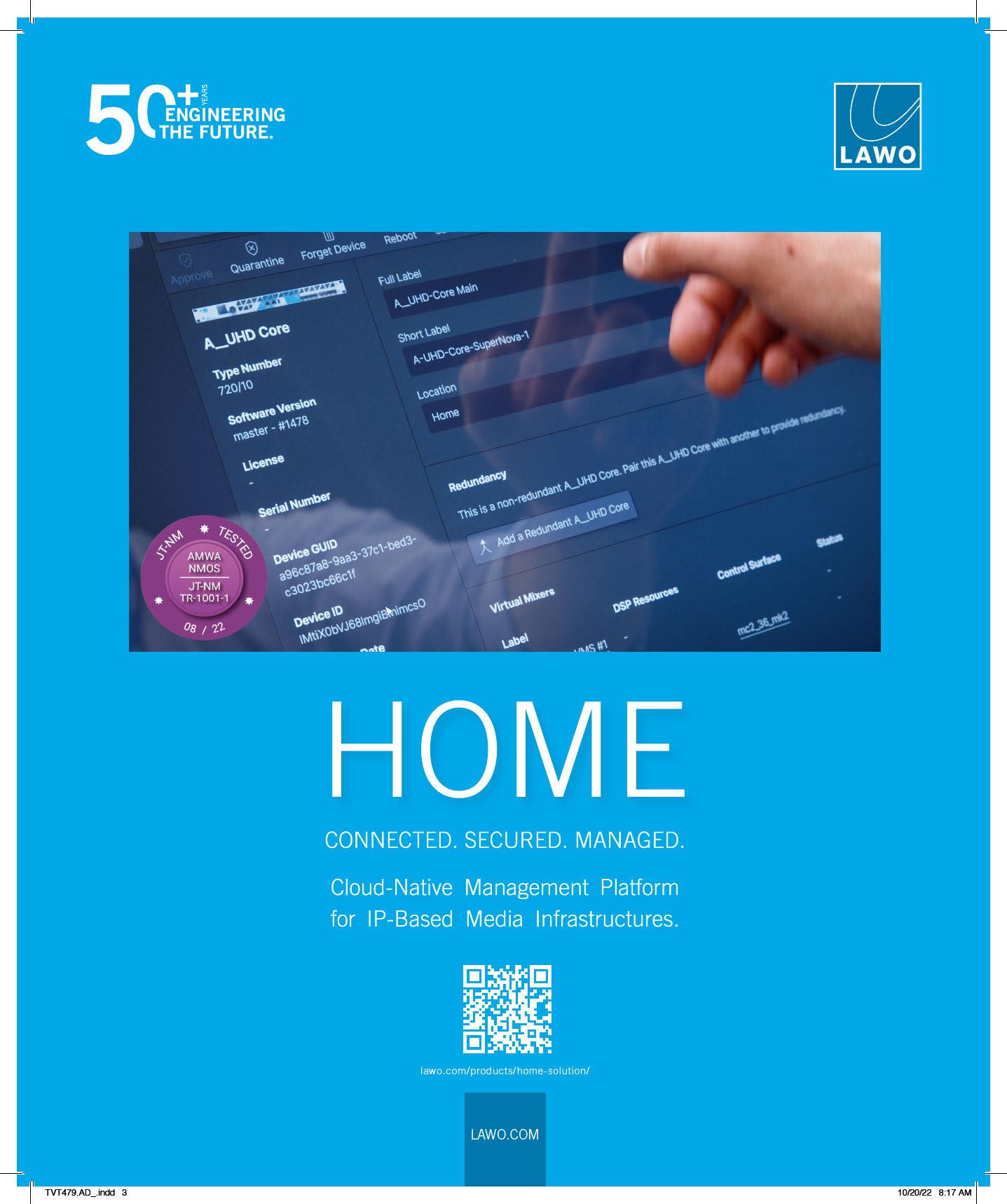

NEW YORK—Amagi, a provider of cloud-based SaaS technology for broadcast and connected TV, has acquired Streamwise, an early-stage data aggregation and reporting platform for content distributors. Terms of the deal were not disclosed.
Streamwise specializes in automating and standardizing data collection across streaming platforms and the deal will help Amagi enhance its data solutions capabilities with comprehensive, more streamlined reporting and dashboards.
As the availability of live linear channels explodes worldwide, advertising and viewership on free ad-supported streaming TV, data and insights on content and ad performance are becoming the key differentiator that helps content creators stay ahead of the game, Amagi said. In response, Amagi Thunderstorm, an advanced server-side ad insertion (SSAI) solution, offers a robust
dataset of performance metrics on viewership and ad engagement to content brands that deploy it for monetization.
With Streamwise, Amagi will be able to seamlessly integrate its proprietary as well as thirdparty data to provide content brands with insightful, unified analytics, the companies reported. Streamwise's modern and intuitive UX will make it easy for Amagi's customers to gain actionable business insights in a centralized and automated manner.
Amagi plans to offer Streamwise capabilities as a stand-alone offering to customers. Once it is integrated with the Amagi product suite in the coming months, customers will be able to additionally subscribe to Streamwise solutions in a seamless manner. Amagi provides a complete suite of solutions for channel creation, distribution and monetization. George Winslow
WASHINGTON—Sen. Edward J. Markey (D-Mass.) and Rep. Anna G. Eshoo (CA-18) have introduced the Communications, Video, and Technology Accessibility Act (CVTA). Markey is a member of the Senate Commerce, Science, and Transportation Committee and author of the 21st Century Communications and Video Accessibility Act (CVAA), and Eshoo is a senior member of the House Energy and Commerce Committee.
If enacted, the act would improve and expand closed captioning and audio description standards for television programming and online video streaming platforms to ensure that people with disabilities have
equitable access to the wide range of programming available to the general public.
It would also update current requirements to ensure viewers can easily activate and select preferred settings for closed captions and audio description on their video programming devices, such as televisions, smart phones, laptops, and tablets, as well as Improve access to video programming for people who are deaf and use sign language.
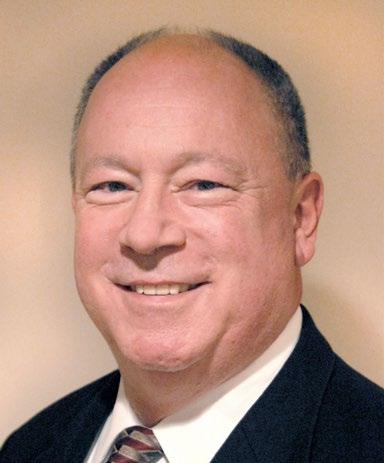

Additionally it would empower the FCC to ensure accessibility regulations keep pace with emerging technologies, including artificial intelligence and augmented or virtual reality platforms. George Winslow
Anyone spending a little time with ONE Media 3.0 President and Sinclair Broadcast Group Vice President of Advanced Technology Mark Aitken over the past several years is almost certain to have heard the words “mobile first” regarding Sinclair’s ATSC 3.0 strategy.
That was a pretty gutsy orientation, especially with no mobile phones or commercially available vehicles equipped with 3.0 receivers nor any tech on the transmission side to bring the concept of a “broadcast offload” network for wireless carriers’ cell service to life.
To those who paid attention as the company moved to make its strategy a reality, the mid-November news that Sinclair and Hyundai Mobis have signed a memorandum of understanding to collaborate on creating and implementing “ATSC 3.0-enabled automotive business models” in the U.S. and South Korea should be no surprise (see "NextGen TV Update," p. 6).
It’s simply the latest development in a series of steps that include the 2019 rollout of a broadcast radio head to support the offload concept and Saankhya Labs’ 3.0 software-defined receiver chip, especially a lower-power-consumption version for smartphones, as well as the 2020 release of production samples of the 3.0-enabled Mark One smartphone.
Less public has been the company’s work internationally to promote 3.0 as the right solution to enable television reception on phones. That’s particularly important in India where the majority of its 1 billion population watch TV on their phones—not in their living rooms. Similarly, the foundational work Sinclair is doing on the international stage with organizations like 3GPP and the ITU to promote 3.0 as part of a heterogeneous 5G network does not receive a lot of attention.
Regardless, little by little, the company is pushing the ball down the field towards its ultimate goal. Along the way, other developments have helped to buttress its efforts, such as the “Michigan Coast-to-Coast” test that proved the viability of IP data delivery to vehicles via 3.0 and the formation of ATSC’s Planning Team 8, which issued a request for proposals for Broadcast Core Network technologies to support data distribution for a nationwide 3.0 mobile network.
Similar to its wireless phone play in India, the Hyundai Mobis announcement could accelerate use of 3.0 to deliver video, audio and data to people and vehicles on the go by getting the technology into the hands (or dashboards) of potentially millions of people and pushing competitors to climb onboard.
Could it all blow up or simply fizzle away? Sure, but that’s doubtful—a lot of planning has gone into this strategy. In the age of everything being about the latest quarterly earnings report, it’s refreshing to see a publicly traded company that’s investing for the long term and—at least as of now—succeeding. l

OTTAWA—Recent changes to Federal Aviation Administration rules governing flight authorizations for drones (aka unmanned aerial systems/UAS or unmanned aerial vehicles/UAVs) now allow for expanded missions with less red tape. These changes, along with other recent positive advances, illustrate the advances that have taken place over the past decade as the use of UASs for TV coverage has blossomed.
The responsible, disciplined approach to UAS pilot training and operations pursued
by U.S. broadcasters has paid off. Impressed by their willingness to embrace the spirit of the law as well as the letter, the FAA has revised their rules to give the industry more flexibility.
The new rules, “Remote ID and Operations Over People,” which the FAA published in December 2020, required UAS operators to be in compliance by September 2023 and signal a pathway to expanded flight operations, according to Jeff Rose, UAS Chief Pilot with Sinclair Broadcast Group.
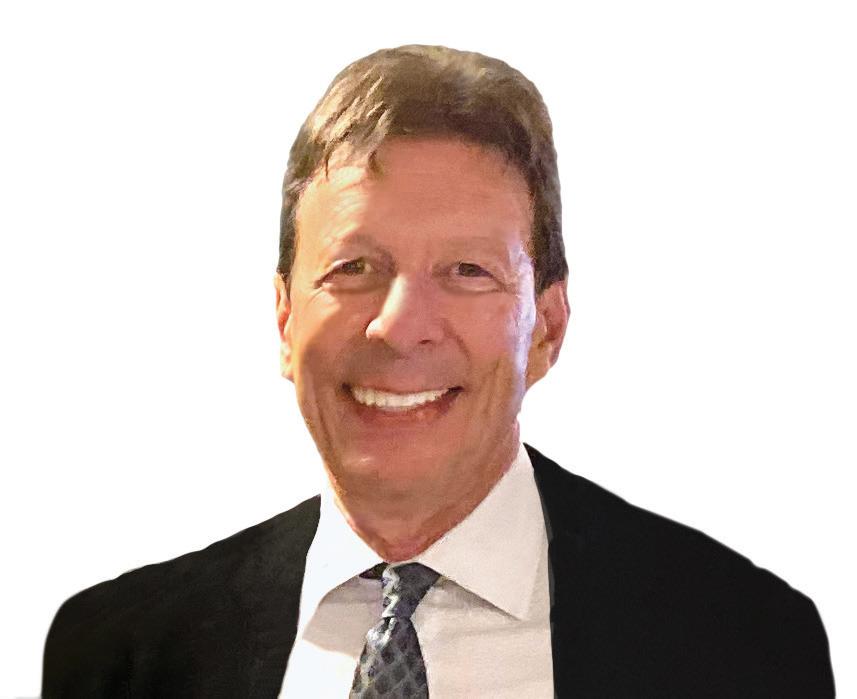

“With these new rules we now also have the ability to obtain LAANC authorizations


[Low Altitude
Authorization Notification Authorization
Capability] for flying at night in restricted airspace,” Rose said. “This automated service allows near instantaneous authorizations for night flying in restricted airspace, which is a big benefit for newsgathering.”
Scott Wilder, senior vice president of field and production operations at Fox News, describes the FAA’s improved LAANC authorization application process as “the best advance that I can speak to on the regulatory front. What used to take 60 days now takes 60 seconds. It is a true game changer. The FAA is doing a phenomenal job with it.”
That’s not all: “The FAA has been working to make it easier to fly and easier to obtain permissions to fly in locations not previously available,” Wilder added. “The FAA is also proving to be 24/7. When we have waiver requests on a Sunday evening, we hear back in an efficient manner.”
Another area where the FAA is providing more leeway to responsible UAS operators is the “Operations Over People” rule applying to pilots who fly under Part 107 of the FAA regulations, according to Dr. Shaun Passley, founder of ZenaTech, developer of the ZenaDrone 1000 totally autonomous (self-flying) UAS. “This rule allows UAV pilots to operate at night under specific conditions and provided that they complete certain training or pass knowledge tests,” he said.
The FAA’s more expansive attitude towards UAS operations is built upon its requirement for these aircraft to be equipped with Standard Remote ID (SRID) transmitters.
“SRID enables the transmission of the drone serial number, brand, GPS, geometric altitude, geometric location, velocity, time of the day, emergency status, and more,” said Claudio Lisman, president, CEO and founder of ProximaVision, a consulting firm specializing in drone and nanosatellite technologies. “UAVs must have their SRIDs operational from the moment of takeoff to shut down, broadcasting message elements at 1Hz [once per second], no later than one second after the measurement of position. In fact, the vehicle will not be able to take off unless it has transmitted all of the required message elements.”
Requiring UASs to carry and use SRIDs at all times makes it possible to integrate them into air traffic control systems alongside manned
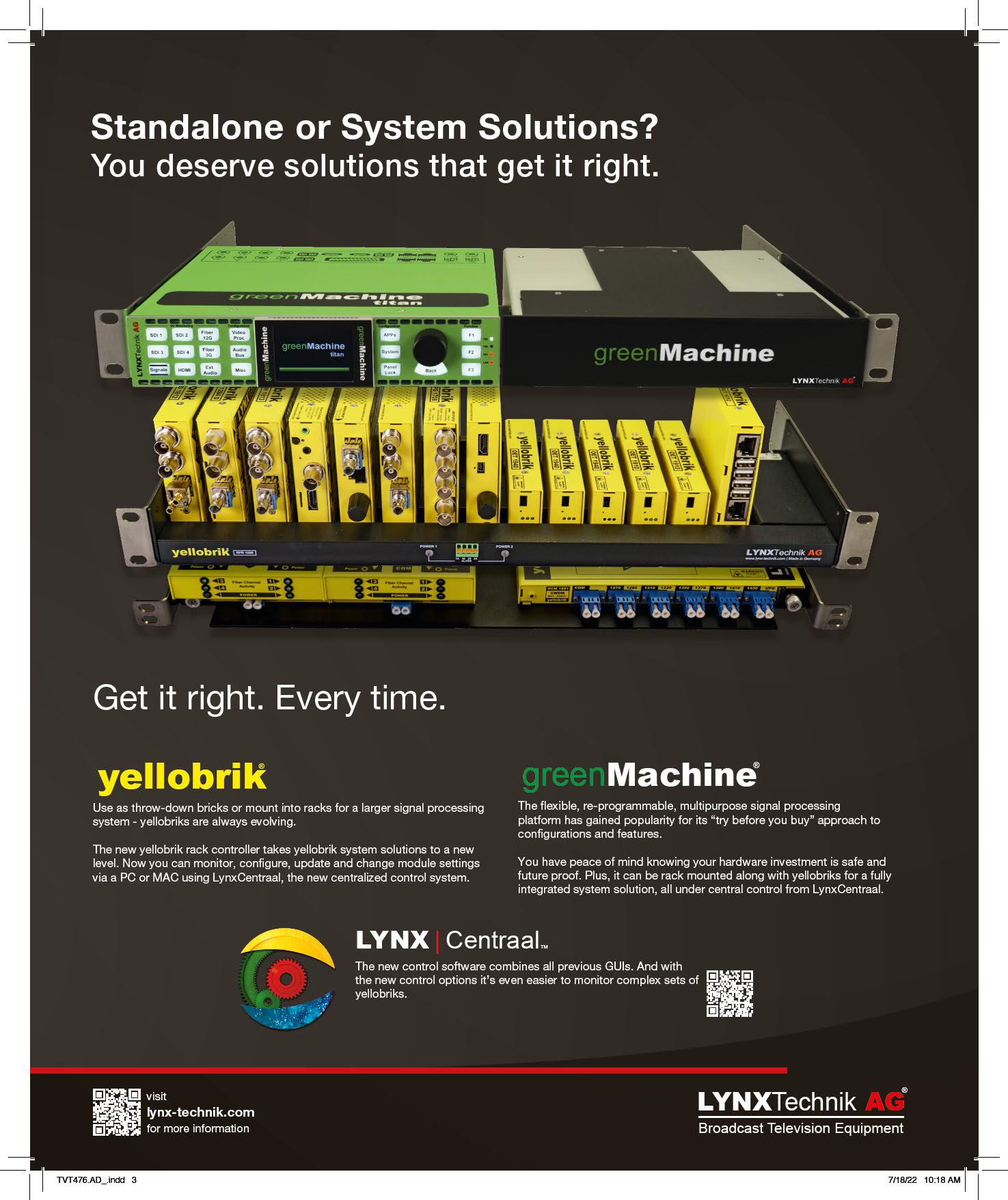
aircraft. As such, “making SRIDs mandatory in manufactured drones will enable much better traffic management, security, and new applications, such as flying over areas that have been restricted up to now,” Lisman added. “It will also allow flying UAVs over people, which in the case of news and production, is almost always required.”
The SRID requirement simply expands options, according to Wilder. “The SRID rule allows us more opportunities to have a drone in the air; most recently during Hurricane Ian, hours before the heart of the storm impacted the west coast of Florida,” he said.
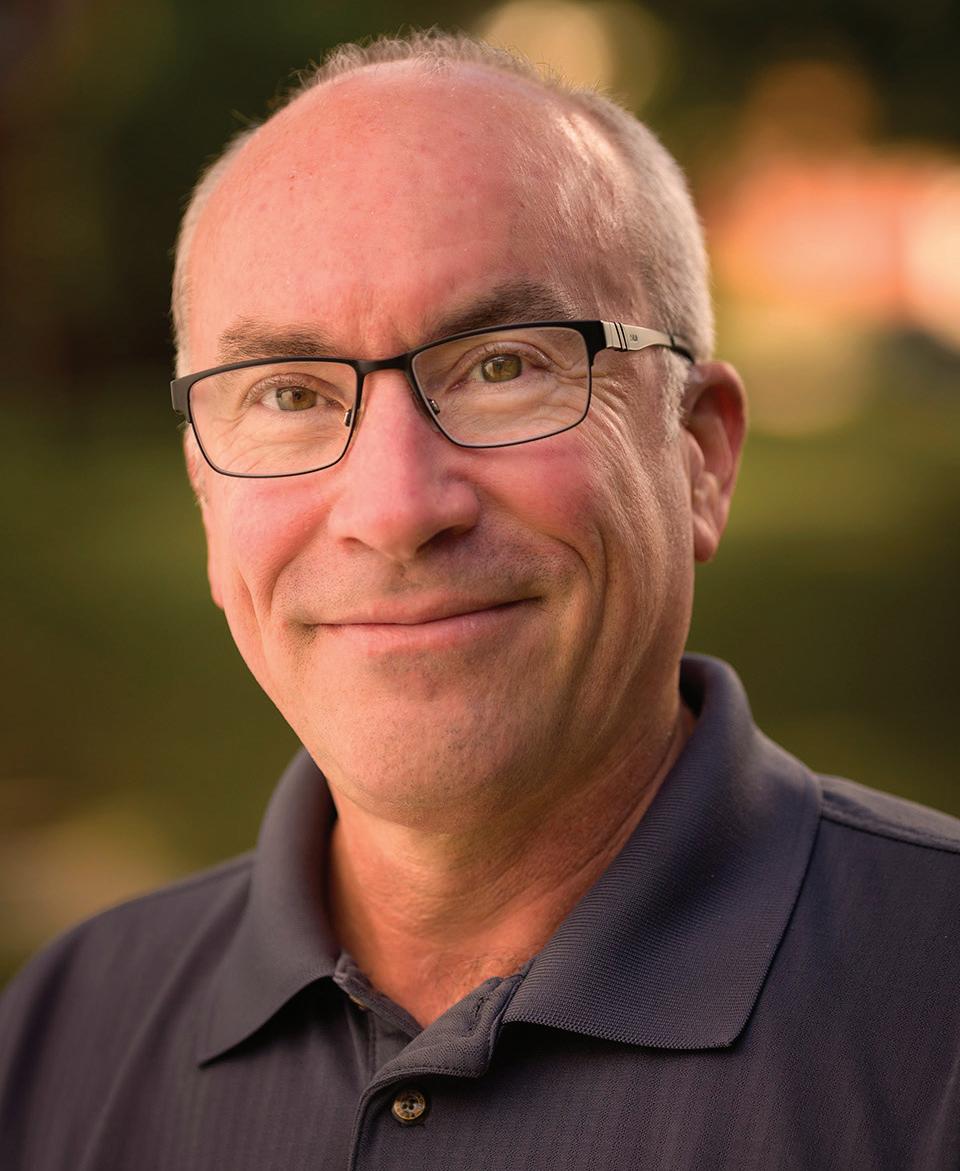
“Remote ID also lays the foundation of the safety and security groundwork needed for more complex drone operations,” said Dr. Passley. “The rule provides crucial information to our national security and law enforcement partners and other agencies charged with ensuring public safety.”
Anyone who has been watching TV news the past two years knows how integral drone footage has become for covering stories effectively. Small wonder: Overhead drone footage can provide a framing context to a story unavailable to ground-based cameras. As well, the motion associated with drone footage makes any news story look better: it’s just more exciting to watch.
These capabilities have allowed Fox News to cover stories in entirely new ways. Take for example, the influx of undocument immigrants at the Texas/Mexico border, where Fox News has been flying drones like the DJI Matrice with thermal imaging for over a year. This kind of high-tech capability “allows us to fly at night and show what looks like high-quality surveillance images of the migrant crisis,” said Wilder. “Every day we capture the surge of migrants happening that you can’t see from the same location on the ground. Our drone coverage on the border has changed the way that story is being told.”
That being said, what really makes UASs so useful to TV news departments is their ability to deploy extremely quickly and start capturing memorable footage fast. “A drone will almost always be able to arrive on the scene faster than a car or mobile unit,” Lisman said. “That is why drones are ideal for coverage of fires, demonstrations, war zones, and sports events applications in TV news and broadcast.”
These advantages explain why UASs are
proving to be as significant an enhancement to TV news production as video cameras were with their instant access to recorded footage (compared to film), and satellite trucks for getting coverage out of anywhere fast.
The result: “Local TV newscasts are using drone video daily for expanded storytelling as well as breaking news coverage,” said Rose. “Our viewers love drone video and have come to expect it regularly whether it is a compelling news story or just beautiful weather shots.” This is why Sinclair now employs 133 pilots across its station, many of whom carry a UAS with them as part of their kit. “This leads to fresh drone content daily,” he said.
As far as TV news UASs have come, there is still one frontier to be conquered: “Beyond Visual Line of Sight” (BVLOS) flight allows the ability to send UASs beyond the view of their operators, navigating their path by using video feeds from their cameras plus any onboard selfflying (autonomous) capabilities.
“Currently, the FAA provides waivers to professional pilots and certain organizations so they can fly BVLOS,” said Lisman; “however, those waivers are hard to obtain. The main limitation is the communication and range between the drone and pilot control. In addition, the latency needs to be very low when flying long distances. This is important, as the pilot needs real-time awareness of the topography and the terrain below.”
Historically, broadcasters such as Fox News have been “very conservative” in the kinds of UAS flight profiles they choose, an approach that has won them trust from the FAA and public alike.
“Safety is our number one priority,” Wilder explained. “I recently denied a request after thinking long and hard about it because I knew what was being requested would look amazing. But I also knew that a lower altitude safer version would be almost as amazing. We aren’t looking to impress anyone, we are looking to offer visual advantages that didn’t previously exist in the safest possible manner.”
The challenges of safe BVLOS flight are being addressed by UAS manufacturers and operators today. And when they are sufficiently resolved by SRID, onboard aircraft avoidance detection systems, and autonomous drones, expect TV news organizations to cross the BVLOS frontier in record numbers.
“In the future, when drones are flying everywhere for package delivery, there will likely be drones used for news gathering flown both with a pilot in the field as we do now and also piloted remotely from beyond visual line of site,” Rose predicted. “These BVLOS drone operations could potentially be piloted remotely from the TV station or pre-deployed as a ‘drone in a box’ at strategic locations.
Rose said Sinclair will even use ATSC 3.0 technology as it becomes incorporated into drone flights, for greater precision and more accuracy. “The use of ATSC is 100 times more precise than GPS alone, allowing for more accurate navigation [from 3 meters with GPS down to 3 centimeters using ATSC datacasting],” he said.
“Every day it gets better and better,” Scott Wilder concluded. “I think within several years every photographer will be a Part 107 pilot and have their own drone. That will be a big change to expect that every story assigned has a Part 107 photographer shooting the story with the ability to have aerial imagery.” l
“Our viewers love drone video and have come to expect it regularly whether it is a compelling news story or just beautiful weather shots.”
JEFF ROSE, SINCLAIR
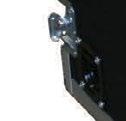


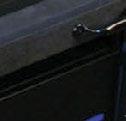
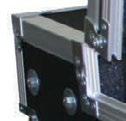

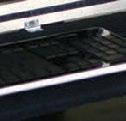


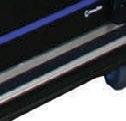


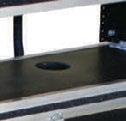


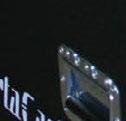






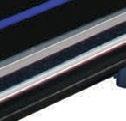

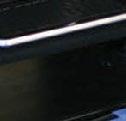
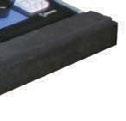































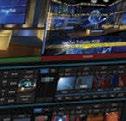
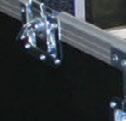
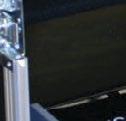
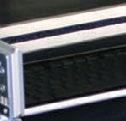
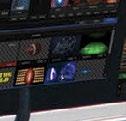



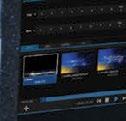


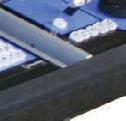
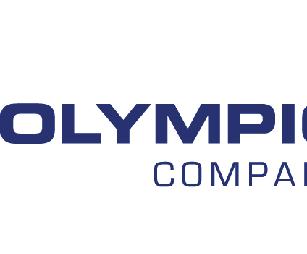

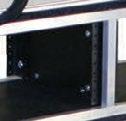

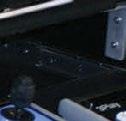
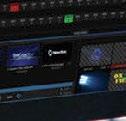
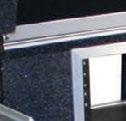


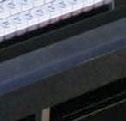





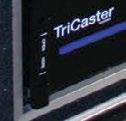
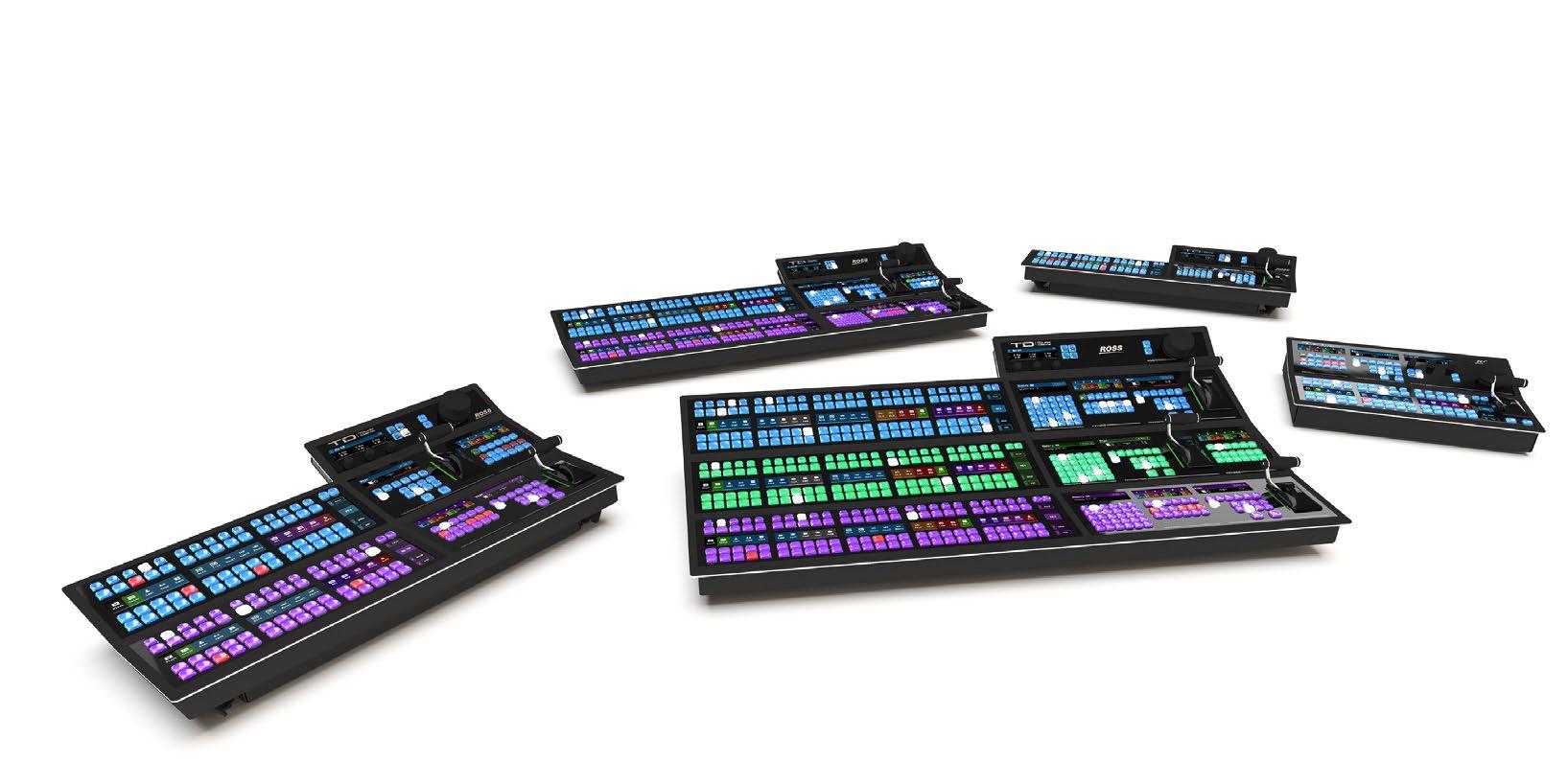
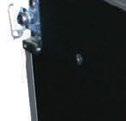

 by Bob Kovacs
by Bob Kovacs
ALEXANDRIA, Va.—Covid has forced lots of changes in how live shows are produced, and it’s unlikely that we will completely go back to the way things were done in 2019. In this new era, it is common for live feeds over conferencing systems like Zoom to be fed into production switchers and mixed into programs on the fly.
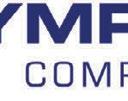
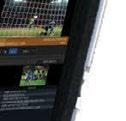
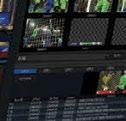
A video feed from a computer running Zoom or even a computer running OBS, vMix

or other videocentric conferencing software is just a video feed as far as a switcher is concerned. Still, there has been a lot of this going on lately, and there are some best-practices to be followed to get optimum results.
Grass Valley’s

Agile Media Processing
Platform (AMPP), the company’s production and distribution technology, can be run either on premise or in the cloud.
“AMPP is format agnostic, so it is easy to combine traditional SDI or IP sources with the streaming formats that can be generated from teleconferencing software like SRT, RIST and NDI,” said Peter Abecassis, senior product marketing manager at Grass Valley.
“Just because it’s software doesn’t mean it’s not a professional broadcast tool. The K-Frame CS-X chassis has three M/Es and six keyers with 2D DPM per M/E, and can be controlled by any GV panel, such as the Kayenne.”

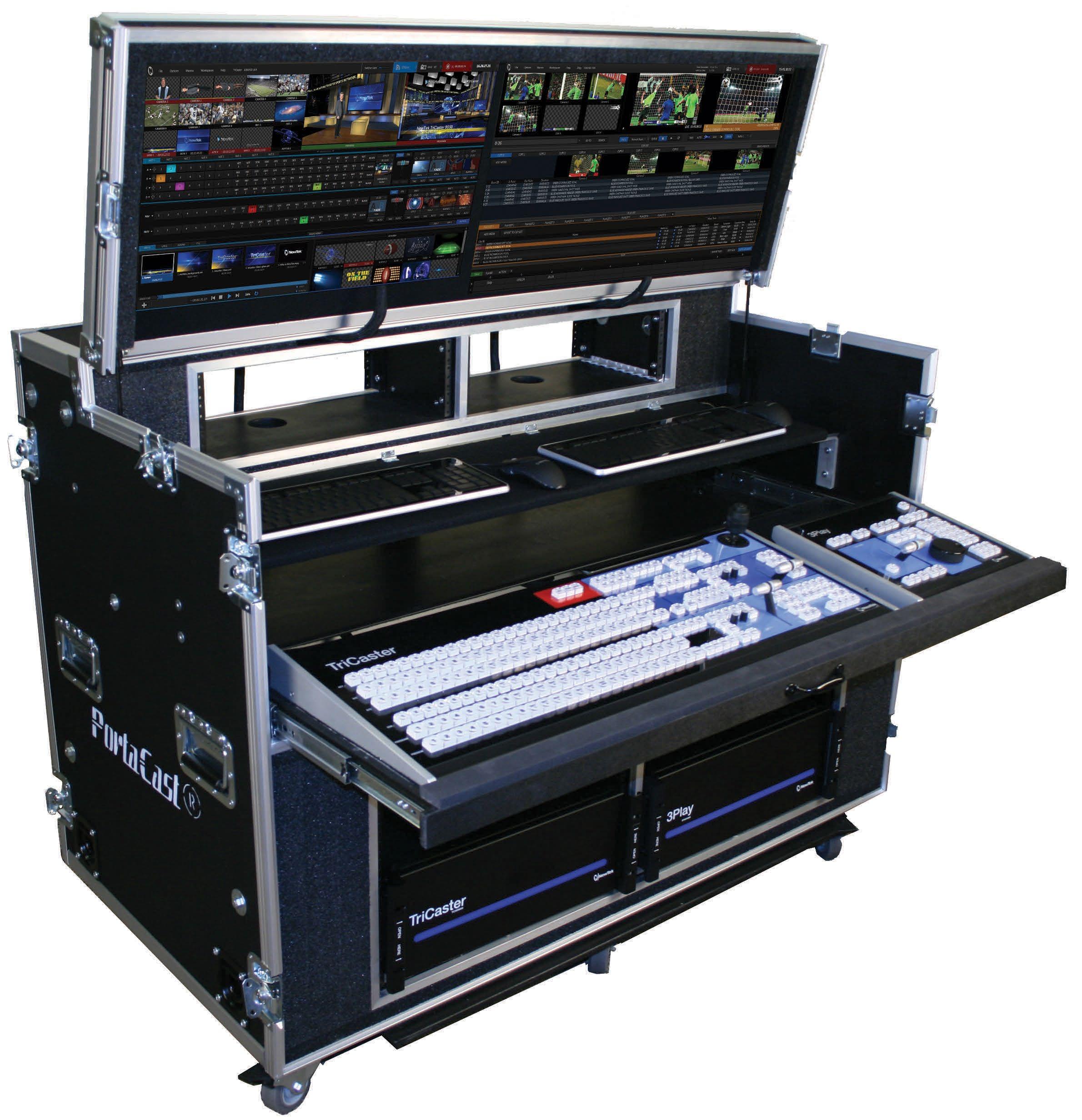
Integrating Zoom Rooms (Zoom’s video conferencing app) or other conferencing feeds into a K-Frame CS-X chassis is straightforward, Abecassis said.
“Using Zoom Rooms, the app can be configured to output an NDI stream,” he said. “AMPP’s NDI Discovery Service allows operators to automatically find and list all NDI sources running on the available network. This includes ‘external’ sources that may not be currently loaded on any AMPP fabric. Any NDI source on the network can then be quickly added to an AMPP router panel or dashboard and routed, mixed, or processed like any other source.”
Tedd Tramaloni, business development manager for production switchers and video servers at Ross Video, said that almost any switcher will accept a range of signal types, so it’s better to consider other aspects of a switcher.
“Choosing the right switcher involves much more than simple I/O or transport stream compatibility,” he said. “Reliability, user experience, ease of operation, useful feature set, adaptability and manufacturing experience are all key factors to consider
when choosing a production switcher.”
Depending on the specific model, Ross production switchers can accept SDI, NDI, HDMI, or IP transport streams.
“Connecting a Zoom computer to a Ross switcher can be a simple process depending on the specific Ross production switcher being used,” Tramaloni said. “Some models, such as Graphite or Carbonite Black Solo, have HDMI inputs that allow direct connection between a computer and the switcher, while other models, such as Carbonite Ultra, Carbonite Black or Acuity, can accommodate SDI signals that have been converted through external devices. If IP is required, either the Ultrix Carbonite or Ultrix
Tramaloni pointed out that signals from a mix of studio devices and conference computers will not be synchronized, so the switcher should have frame sync capability on every input. He added that most Ross Video switchers have frame sync capability built-in, but it’s good to check to be sure that the switcher can handle non-synchronous inputs.
Blackmagic Design’s ATEM switchers have an interesting twist if your goal is to “broadcast” your switcher output via a Zoom or other conference feed.
“All ATEM Mini and ATEM SDI live production switchers, ranging from the Pro to the Extreme ISO models, allow our customers to combine Zoom with local studio feeds,” said Bob Caniglia, director of Americas sales operations for Blackmagic Design. “All models feature a USB feed that operates as a simple webcam source. That means customers can plug into a computer and get working with any video software, like Zoom. The software is tricked into thinking the ATEM is a common webcam, but it’s

“Choosing the right switcher involves more than simple I/O or transport stream connectivity”
TEDD TRAMALONI, ROSS VIDEO
really a live production switcher.”
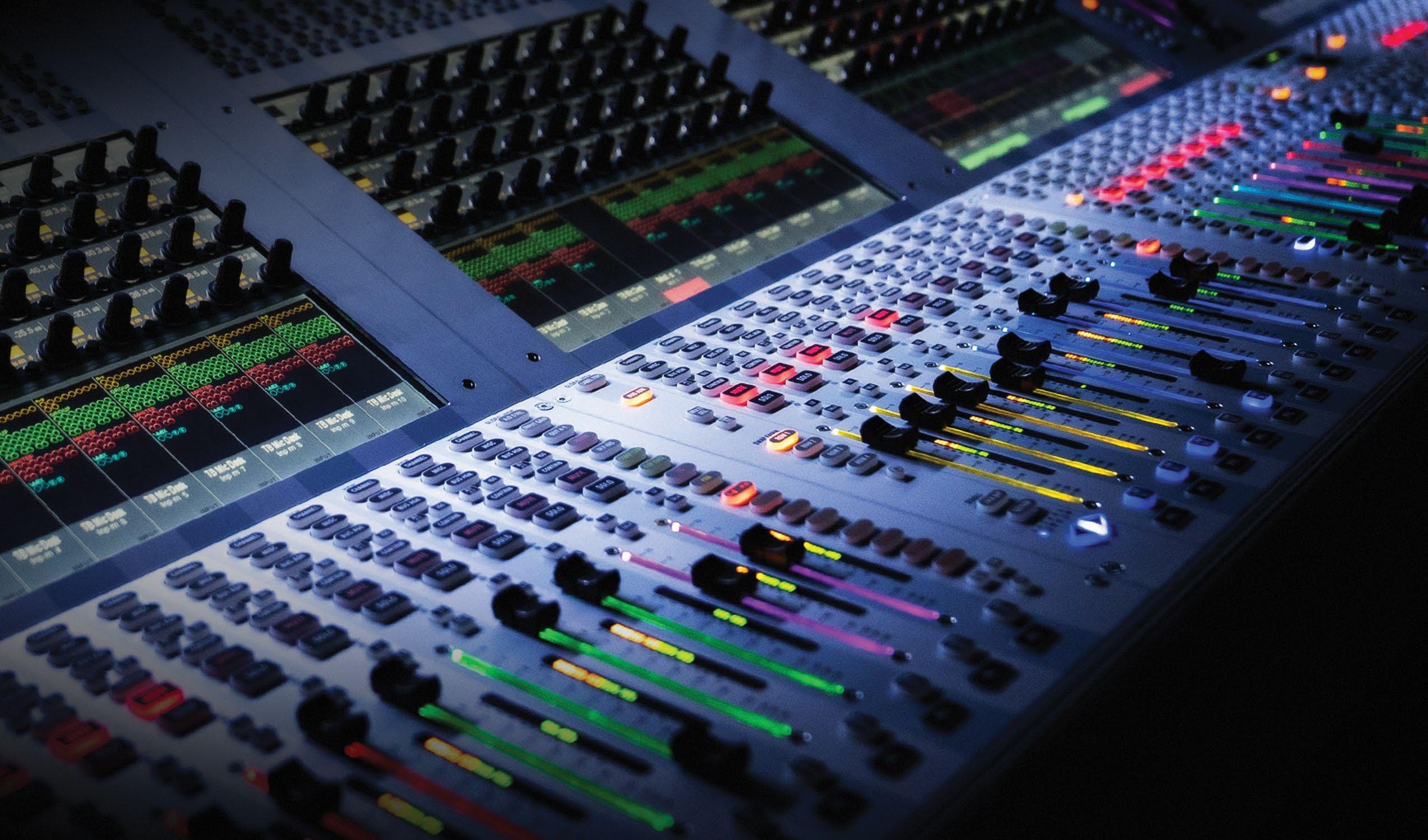
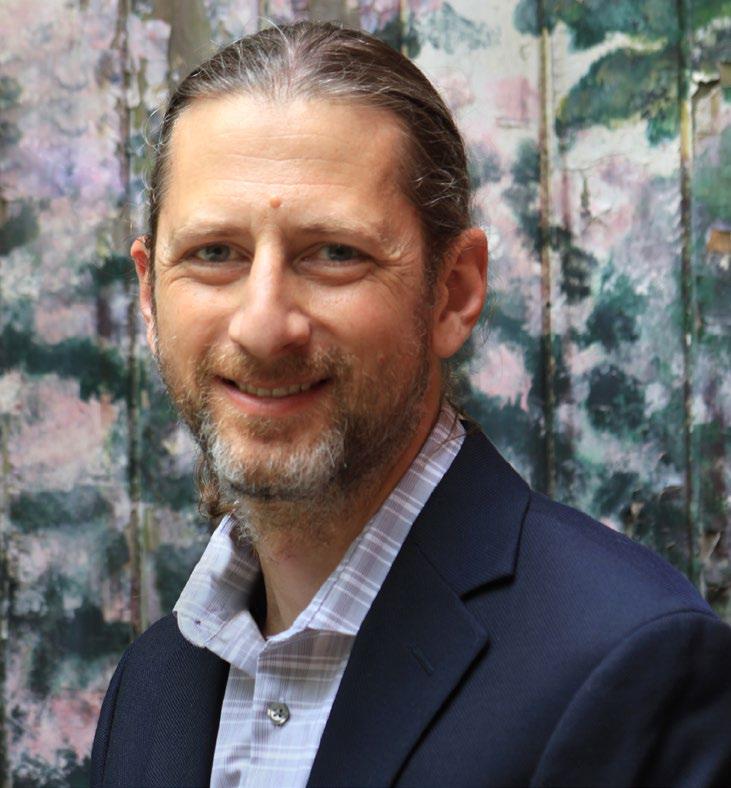
CJ Kramer, president of Kolrom Multimedia Inc., a production company in Baltimore, uses Blackmagic ATEM switchers for its Zoom conferencing applications.
“When Covid forced our production into an all-virtual workflow, we used the ATEM switchers to also capture the feed of a Zoom/ video calls to serve as additional inputs,” Kramer said. “Additionally, we would linein animated or video backgrounds that we created to serve as the backgrounds for the respective key(s). The ATEM Minis completely changed and improved the service we were providing for our customers, who were just looking for simple, uncomplicated and inexpensive solutions.”
If you already have a switcher or camera that you need to feed into a conferencing system, an easy way to accomplish that is to get a device that will convert the switcher’s output into a USB signal that resembles a webcam. (This is the feature that some Blackmagic switchers have, as described
above.)
I needed to do exactly this for one project, so I got a $20 HDMI-to-USB adapter that let me feed the camera’s HDMI output into a USB port on a computer. The computer accepted the signal as though it was a
webcam, and using it with Zoom and other conferencing software was a breeze.
At the receiving end, the picture and sound quality was excellent (by Zoom standards).
Suddenly, the remote participants went from peering at poorly focused and framed video from a laptop’s 79-cent camera to getting the output of an $8,000 studio camera. Everyone thought the $20 adapter was a fine addition to the studio’s equipment.
So many things are rapidly changing in the broadcast industry, including the products and techniques required to acquire and broadcast signals. Some old-timers might turn up their noses at the quality of a conferencing feed, but the fact remains that integrating conferencing feeds was impossible as recently as five or six years ago. In a couple more years, image and sound quality will only improve—then there will be no question about integrating such feeds as well as using conferencing systems like Zoom to broadcast out as an ad hoc network.
They will then have become an important and necessary part of the broadcast signal chain. l
Peter Abecassis, senior product marketing manager at Grass Valleyachievements of “The Mandalorian,” which introduced the virtual production concept to a broad audience who found themselves “fooled” by the sweeping desert vistas, all composed with tiny pixels instead of tiny grains of sand.
But LED volumes are being used at all budget levels of production, even in unexpected places like live comedy shows. I recently shot a comedy series with Laugh Lounge in which we employed a wide range of Canon cameras to capture the live performances. We also usually have one or two Canon CR-N500 PTZ cameras with the Laugh Lounge Comedy Club, which produces 150 live stream sets a year.
Typically, these performances need to feature differentiated sets and backgrounds that fit the style and tone of the comedian, but they don’t typically need to be hyper photorealistic or complex—it’s more of a graphic aesthetic. We’re looking at show ideas that not only have an LED wall as a passive background, but also might include segments utilizing the power of a game engine.
By Erik “Wolfie” Wolford, Director of PhotographyLOS ANGELES—I’ve never had a harder time explaining to my friends what I do for a living: “I’m a cinematographer. I specialize in shooting LED volumes. It’s like a greenscreen, but instead of the greenscreen we have these huge video walls that are 80 feet wide by 20 feet tall—we play the background material, and we film the actor standing in front of it…” Blank stares are the most common response.
The virtual world seems to be at the top of conversations about the future of entertainment, community, and social experiences. But for those of us in production, we’re no strangers to new visual effects technology. I’ve shot greenscreen. I’ve filmed using rear screen projection. I’ve even filmed using front screen projection back in the late 1990s.
But, there’s no denying that virtual productions have exploded in just the last two years. One of the main drivers of this was Covid, as suddenly many companies specializing in music tours and the like suddenly needed to repurpose their video walls. Combined with the trend of actors being willing to film locally on a soundstage, as it meant they didn’t need to climb on an airplane and risk exposure, virtual productions took off.
And beyond these necessary pivots, the technological barriers to using this method have recently reduced significantly—we’ve
seen improved camera technologies and innovations powering growth, such as PTZ cameras, LED walls, game engines, increased computational power and an explosion in the quality and quantity of new higher quality LED panels.
We are now in a defining moment of how far virtual production has come and where it’s going next.
In my work as a cinematographer, I’m witnessing volumetric stages and virtual production stages popping up all over America—Los Angeles alone has a large and varied selection of stages to choose from. Elements of virtual productions are being integrated into productions across the country. In fact, I just finished shooting a season of a TV show at Brandstar Studios in Florida, which featured practical sets with virtual set extensions. Volume work is here to stay.
In terms of big budget options for virtual production, we’ve all seen the magnificent
One of the things we found in our live shows is when you get two world-class comedians improvising with each other, you can find spontaneous comedy gold. To take advantage, we’ve crafted graphic 3D elements that can be used in an improv segment to be visually stimulating and a leap off point for the comedians’ banter.
PTZ cameras, which now mostly have genlock and allow us to control and match color in real time and produce a cinema quality image, can really shine in settings where there is a passive, non-tracked LED wall that is purely decorative. And when shooting these shows, the need for both high and low angles, as well as pans of the audience for reactions, all lends itself nicely to the use of PTZ cameras. They sit in an arsenal of cameras available for virtual production, and can be a unique tool when used correctly.
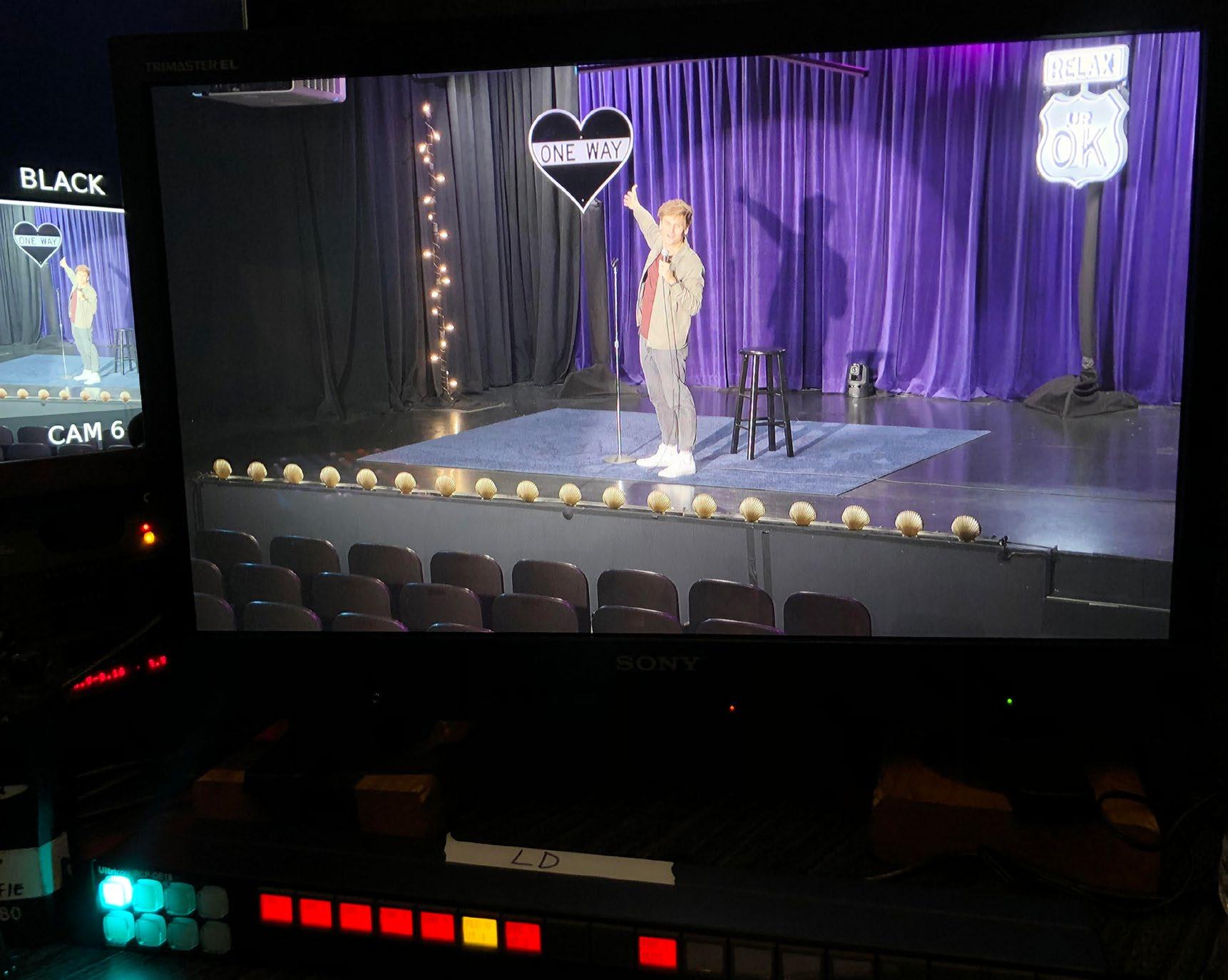
Another valuable use case for virtual production is for broadcast and large-scale live concerts, in which we typically set up a tracked camera and utilize an LED wall with graphic imagery and animations. I was cinematographer for a similar production for a Riot Games event and its musical guest Porter Robinson—his background animations were highly graphic and esoteric and harken back to the animated quality of the IP that we were tying in. We created a virtual floor and virtual ceiling so that we could grab high angle shots and dramatic low angle views and still make sure everything was cohesive. We had a short
In my work as a cinematographer, I’m witnessing volumetric stages and virtual production stages popping up all over America.
Tying it all together with PTZ cameras and LED volumes
window of time to get all our shots. From those constraints, I realized that sometimes I’ll need more coverage.
I subsequently began testing out a PTZ camera to see how it would look in such an aggressively LED environment. The PTZs are great—easy to rig, easy to remote control, and nowadays much better sensors and glass than one would expect to find in a PTZ. They now have camera tracking built in—as long as the camera base itself stays put and doesn’t move. All of this works together to provide fantastic coverage and a final piece of content that reflects the imagination and visual wonder of an artistic performance.
The author recently shot a comedy series at Laugh Lounge, using a wide range of Canon PTZ cameras to capture the live performances.
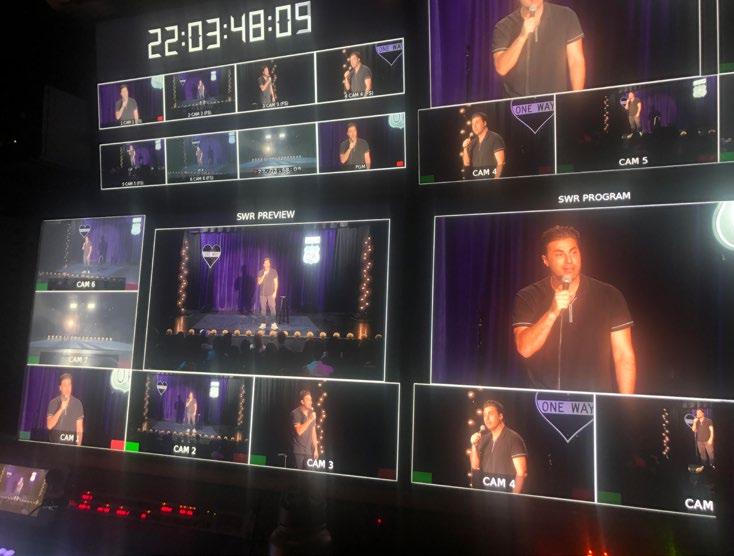
With the explosion of the aforementioned technologies including LED video wall operate and live cut a comedy show and have it up on the Laugh Lounge channel streaming live is an amazing use case for the PTZs. The color science in these cameras has improved greatly and can mix in well with cinema cameras like a Canon Cinema EOS C300MKIII or C500MKII so with certain live streaming situations, it totally fits the bill.
WHEN YOU CAN’T BE THERE IN PERSON

“Content is king” is still the mantra and

for us in production, it means that it needs to get made, no matter what. Remote options become more attractive for producers and clients who might not be able to make it to set for health or financial reasons.
Virtual production with telecommunication through a PTZ camera is a way to help ensure that clients can still have an in, and is a huge boon for working with above and below the line talent from around the globe. Recently, I was the cinematographer on a commercial/ music video shoot and the director couldn’t make it to the set. Instead of shutting down for the day, we opted for him to watch and direct the set via remote control PTZ camera. It all felt a bit futuristic, but ultimately valuable in the moment. PTZs can be a “Swiss Army Knife” in this way.
The last couple of years have introduced the power of virtual productions to many in our industry. While virtual productions won’t be right for every project, it can greatly improve the process and open doors for new endeavors and certain forms of entertainment. I’ll be riding the wave of technological innovation and excitement in the industry to make virtual production even more of a reality. l
Studios should have a plan for the transition

Even though the transi tion to LED lighting is well under way, there are lots of TV stations that still depend on studio fluores cent lights. I know this, in part, because I helped put them up with their last news set. If you’re involved in providing lighting in a station that still uses fluores cent studio fixtures, this column is especially for you.
As discussed in earlier columns, there is an ongoing succession of lighting technology happening right now. Just as flame-based lighting gave way to incandescent lamps, fluorescent is now being replaced by LED—the difference is that few will wax nostalgic over the loss of fluorescent. Manufacturers have begun sounding the “last call” for lamp orders as
we rapidly approach the final days of fluorescent lighting.
It wasn’t that long ago that fluorescent light was the most energy-efficient solution for many applications, includ ing television lighting. It was well-suited to replace the earlier incandescent softlights. Hybrid lighting packages of incandes cent Fresnels and fluorescent softlights used to be common pairing for lighting television studios. That was before LEDs became practical.
Ten years ago, it cost twice as much money to buy an LED version of a softlight, compared to a fluorescent fixture. Worse, the LED softlights were only half as bright as the fluorescent. The color fidelity was
poor and the lumen-per-watt efficiency was worse than the fluorescent lights they were destined to replace. Today, all of those deficiencies are history. Today’s high-quality LED light fixtures are superior to fluorescent lights in every way.
Depending on where you live, you may have already purchased your last fluores cent tube as new laws roll out over the next year or two. Several state legislatures have already set the path to prohibit the sale of fluorescent lamps. By my reading of the California bill, the sale of nearly all fluores cent lamps will be prohibited beginning Jan. 1, 2024.
The European Commission has already announced that it will phase out general purpose fluorescent lighting across Europe in 2023. By international agreement, The Minamata Convention on Mercury, with 138 signatories, phases out fluorescent lamps by 2025.

For most purposes, fluorescent tube sales will stop by 2024. In other words, the end of fluorescent lighting is in sight. That’s actually a good thing. Not only will this transition save energy, but it will reduce a significant source of pollution in our envi ronment.
Why such unanimous agreement on the elimination of this once celebrated lighting
technology? It boils down to a poisonous drop inside of every tube: Mercury.
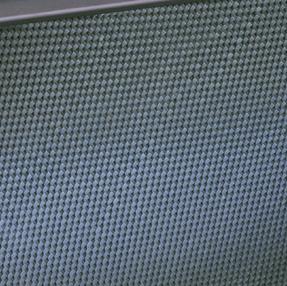
Now that we have a viable alternative light source, the phase-out of fluorescent tubes will help reduce exposure to this neurotoxin. This move will keep millions of metric tons of mercury pollution and CO2 out of our environment. It will also save consumers a trillion dollars in the energy costs through increased efficiency.

Still using fluorescent lights in your studio? Then you need an exit strategy now. If you’re still using fluorescent lighting, your studio should already be planning a path to replace them. You may have as little as a year left to complete this transition. While the cost of the new equipment can be substantial, the supporting infrastructure is actually simple by comparison to what was needed for incandescent.












The latest lighting fixtures require little more than non-dim power and a DMX data line. While specific details about adapting to this next generation of lights is beyond the scope of this column, the requirements are well known within the industry. This is no longer “cutting-edge” stuff.


In an era of long lead times and supply-chain challenges, you need to plan ahead. With a lot of stations trying to beat the clock on this, there could be a wait. For some fortunate facilities, there may be an easier route.
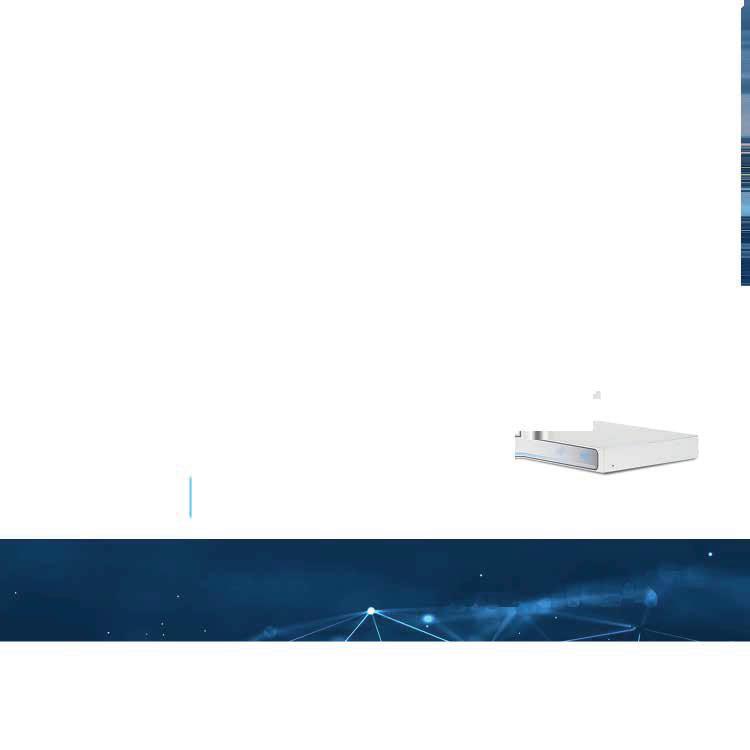
I was optimistic when Osram briefly introduced an LED retrofit to replace a common type of studio fluorescent tube. Unfortunately, they discontinued it shortly after its introduction. It’s now clear that lamp manufacturers have lost interest in fluorescent lamps. Based on their current websites,
they’ve already moved on.

There is, however, one upgrade solution that deserves special note. Brightline came up with an all-in-one retrofit package for their outdated S1.2 and S1.4 fluorescent fixtures. The LED upgrade kit is easy to install and costs a fraction of a new fixture.
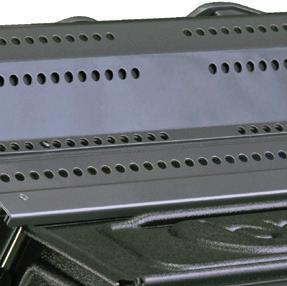
I admire that this company figured out how to extend the life of their legacy fixtures while maintaining exceptional performance. The upgraded light is fully DMX controllable, has an excellent 97 CRI (Color Rendering Index) at 5600K (daylight) color temperature, and all of their well-designed
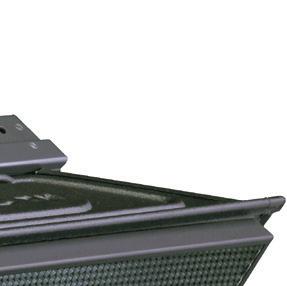

accessories still fit.
This is a great option if you’ve already got Brightline fluorescent fixtures in your lighting grid.
Taking this a step further, why not design more sustainable fixtures? Even a 50,000+ hour LED lifespan will eventually fade and lose color accuracy. When they finally fail, is it really necessary to replace the entire fixture? Why not just replace the light engine? The result would be less waste and greater user value.
Whatever new or renewed equipment you eventually choose, remember that fluorescent tubes are hazardous waste. The EPA encourages recycling of fluorescent lamps. Local regulation may well require it. You can find resources by Googling “how to recycle and dispose of fluorescent tubes.”
Inevitably, there will be another major advance in lighting technology that makes LEDs obsolete. Let’s hope the next lighting revolution is at least a few years away. ●
Bruce Aleksander invites comments from those interested in lighting. TVLightingguy@hotmail.com.
retrofit packagefor
their of that their
For most purposes, fluorescent tube sales will stop by 2024.
The metaverse… can you tell me exactly what it is? We are told repeat edly that the metaverse is “the future of the internet.”
Some say it’s hyper-real video games; others say it is a new way to experience music and sports; while others say it is the collab orative workplace of the future. But I have yet to hear a really clear definition of the metaverse.

About six months ago, Mark Zuckerberg changed the name of Facebook to “Meta,” a nod to focusing on the metaverse. Yet, even now, the definition of Zuckerberg’s grand vision has not gotten any sharper. From what I can find, metaverse still means very different things to different people.

Matthew Ball, a theorist who has writ ten about the metaverse, has a definition: “The metaverse is a massively scaled and interoperable network of real-time rendered 3D virtual worlds, which can be experienced
synchronously and persistently by an effectively unlimited number of users with an individual sense of presence, and with continuity of data, such as identity, history, entitlements, objects, communi cations and payments.”
Okay, got that! I can certainly see the metaverse with highly realistic video games. Roblox is working on this with its online game creation platform that allows users to program and play games created by other users.
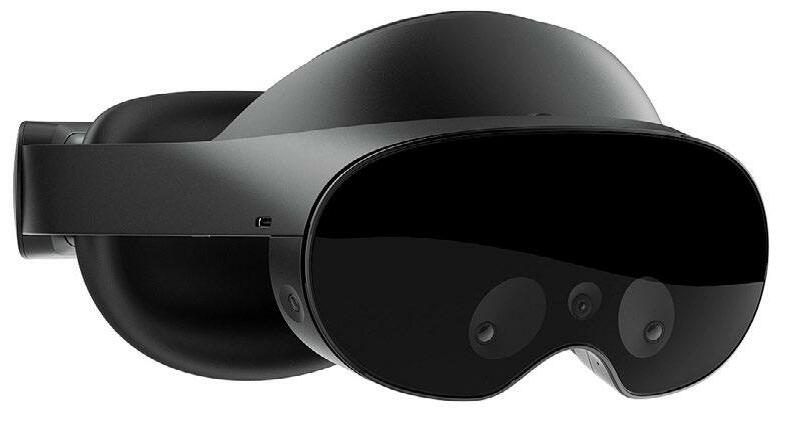
But what is Facebook’s (now Meta) description of the metaverse? The key to understanding the company’s vision is the new Meta Quest Pro headset ($1,499). It is billed as “a whole new way to work, create and
collaborate.”
With this headset, Meta is going beyond games with virtual reality designed to allow users to become part of events, such as con certs or sports, and to do actual work while staying grounded in the real world.
The idea is, while wearing the goggles, users collaborate in mixed reality as they work on joint projects—such as designing cars or buildings; doing artwork; or even mixing audio with virtual screens. Users can walk around the inside of a house or building before it’s built or lift a skyscraper with one hand to examine its structural integrity.
“Authentic avatar expressions mimic your natural facial expressions, so you can be fully present in meetings and gatherings with friends and bring more of your true person ality to life in VR,” Meta writes in its press material.
Meta has created “Workrooms,” a virtu al space that gives collaborators enhanced personal productivity, while “Workplace” is a business communication tool that uses Groups, Live Video, inte grations and other familiar features to help workers
The key to understanding Meta’s vision is the new Meta Quest Pro headset, which will set you back $1,500.
What is it and what can you do with it?
share information. Perhaps most appealing to those who prefer working from home, it helps teams collaborate no matter where they are located.
Of course, the metaverse is also about selling—everything from concerts and sports to furniture and virtual clothes. One can only imagine the new ways Meta will entice you to part with your money.
If one replaces the word “metaverse” with “cyberspace,” what is the difference? Most of the time the two are essentially the same, though the metaverse probably has more realistic visuals. Those images are mainly virtual and augmented reality that combine parts of the digital and physical worlds.
Some companies promote the metaverse as some sort of new digital economy, where users can create, buy and sell goods. Perhaps one day it will become that, but not yet.
Big technology companies like Microsoft and Meta are already trying to interact with virtual worlds. Nvidia, Unity, Roblox and Snap are creating infrastructures to make virtual worlds more closely mimic physical life.

In the video industry, Epic’s Unreal Engine 5 platform (5.1 was released just last month, making the platform easier to use and more efficient) is being used in digital cinema for virtual production—an innovation that is already bringing down the cost and com plexity of some projects. However, whether the metaverse becomes a key part of future television production or mostly a competitor remains an open question.
Today, the metaverse is such a loosely
used term that anything from a virtual reality concert to a video game is grouped under the same category. There are no hard rules as to a definition.
The future of the metaverse ranges from human pessimism to over-the-top fanaticism. Beyond all the hype, there are some very useful new technologies being developed for the metaverse. Things like mass connectivity of people and tracking tools that can follow a person’s eyes and hand movement. On their own, these new technologies show real prom
ise for future innovation.
But the headsets required for this experi ence are still bulky and expensive. They can cause motion sickness for some and physical pain if worn too long. Maybe over time this problem will be solved, but right now it is hard to see the mass adoption of such a clum sy contraption.
Glossing over these limitations of the metaverse in the marketplace is pervasive. After so much hype, many industry figures are exhausted by the slow progress and so much wishful thinking. Progress is coming in incremental bits.
Many compare these first days of the metaverse movement to the early years of the internet. The internet improved in technical quality with time and technical development. But even if metaverse technology is perfected, there is still no guarantee it will catch on with the masses. Will people even want to be in a virtual office, attend virtual concerts or play virtual games? It’s an open question.
Apple’s CEO Tim Cook recently noted that it’s important that people have an under standing of a product before they will buy it. “I’m really not sure the average person can tell you what the metaverse is,” he said.

Whatever the metaverse becomes, it is not here yet. Real people have always resisted wearing excessive gadgetry—much less bulky goggles. That alone is a real challenge.
However, many of the technologies being developed from metaverse research will find valuable uses in daily life. But today, none of us can predict the future for this nascent new area of technical exploration. l
Frank Beacham is a New York City-based writer and media producer.
“I’m really not sure the average person can tell you what the metaverse is.”
Iam reading articles from writ ers with a modest amount of understanding about technical things in mainstream pub lications such as “Fortune” and “Rolling Stone,” touting the ben efits and joys of high-definition television and immersive sound.

Well, it’s about time. The enter tainment industry has defined what the scope of audio and video is in an advanced entertainment world, and hardware manufacturers have scrambled to figure out what the consumer wants and how much they will pay.
In other publications, I have read vague
and confusing explanations about what an “immersive entertain ment experience” is, and some businesses and writers predict that immersive sound and “Gog gle TV” maybe the last frontier in television production.
But I believe there is more to come. The picture people have tried to make 3D work while, in the end, the picture is still 2K, 4K and 8K—just bigger and better of the same thing. The way to make 3D pictures work is through the “gog gle experience,” which arguably has brought us to the current marketing hype with the
metaverse. Sold my stock a long time ago.
Future-generation sound is more than just bigger and better, but clearly Next Generation Audio (NGA) is different. A digital audio path gave us more channels and more control. The consumer can use their bandwidth for 3D im mersive sound or interactive channels or any combination that the bandwidth will permit. If I want to immerse myself with team radio chatter or no babble at all from the commen tators, the possibilities are endless. But what about just watching the news, baseball game or an old movie?
ACTIVE OR PASSIVE?
First consider that screen experiences are either “active involvement” such as with games and VR, or “passive involvement” as with traditional television. I think there is some confusion about what the future of broadcasting is and how TV technologists fit into a new reality entertainment experience. Next Generation Television (NGT) will be differentiated by several capabilities/features. For example, consider those who provide live real-time events such as the purveyors of news and sports, and those who playback or stream on-demand content.
Clearly, future entertainment, future audio and the future experience will only develop, but venture carefully. Surveys show that most people can only stomach a limited amount of the “goggle experience.” A little out-of-thebox thinking brings to mind the possibili ties of a new technology paradigm—the DEVO energy dome hats where the playback inside the hat replicates a “domed” experience of pictures and sound completely immersing the wearer.
We hear the hype about immersive sound, but what is immersive sound?
I contend immersive sound is a certain “frame of mind” and here is what I mean. Baseball


occupies the broadcast space for 162 days a year. How do you produce baseball in im mersive sound? The basic definition is to add height sound. Well, that just enhances the dimensional space, but is that “real” immer sive sound?
At the MLB All-Star Game in July, Joe Car penter, senior audio engineer at Fox Sports, had microphones on the umpire, in the nets over the infield, on the outfield walls, micro phone operators, microphones in the bases and only he knows where else. But he took the sound to another level when commen tator John Smoltz was coaching the pitcher in real time during the game. This is total entertainment immersion. Bravo to my sound hero Joe Carpenter who receives my “TV Tech Best Sounds of 2022” award.
Finessing the sounds is more than about just adding more microphones. I came from the recording studio to outside broadcast and was always surprised at the amount of time spent on a drum sound and how little time was spent on the sound of commentary microphones. Things are slow to change anyway, but clearly unless someone pushes the boundaries then nothing is learned or advanced.
There is a symbiotic relationship between technology and sound development. With digi tal audio you can pack more sound into smaller packages. Radio microphones are in places that were impossible to reach only a short time ago and I think audio has earned some respect over the years, especially during the sound-starved Covid pandemic. We are a long way from when I started and was told audio was 10% of the show and 90% of the problems.
In the past, audio has been like having a
But the future of audio is à la carte: future audio practitioners will not only be tasked to provide a scalable audio mix—anything between stereo and full immersive—but they will also have to manage

the signal flow and content of many different audio configurations. Add other feeds and splits to rights holders, archives and inter coms, and it is no wonder that many audio folks are losing their hair from pulling it out.
I’m looking forward to television in 2023. Remember, it’s only entertainment in the end. l
Dennis Baxter has contributed to hundreds of live events including sound design for nine Olympic Games. He has earned multiple Emmy Awards and is the author of “A Practical Guide to Television Sound Engineering” and “Immersive Sound Production—A Practical Guide” on Focal Press. He can be reached at dbaxter@dennisbaxtersound. com or at www.dennisbaxtersound.com.
Finessing the sounds is more than about just adding more microphones.Joe Carpenter
BirdDog is now shipping BirdDog Cloud 3.0, its cloud-based NDI remote delivery and manage ment software solution.
BirdDog Cloud 3.0 deliv ers a fast, easy and se cure way for broadcasters and live event producers to expand beyond their local network to distribute NDI content worldwide.
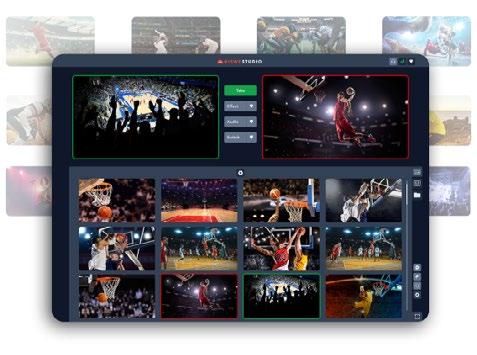

BirdDog Cloud 3.0 introduces new levels of conveniences that enable broadcasters to set up a remote studio and control it from anywhere in the world with full PTZ Control. Key features include: a more intuitive user interface; high security and low latency using the SRT protocol with 128/256-bit AES encryption; BirdDog Transport; a suite of remote deliv ery and management workflow apps and new GPU support

z For additional information visit https://birddog.tv.
The HDCU2 de-icing sensor and heating con troller for satellite antennas incorpo rates an ambient PT 100 tempera ture sensor and optional reflector in addition to a snow precipitation sensor. Up to three 2.9 kW heating circuits in three-phase 400V AC configuration can be controlled.
The HDCU2 can alternatively be configured for single-phase 230V AC operation where the combined output load for all three power feeds does not exceed 2.9 kW. Load control can be performed individually for each of the three circuits. Each heater circuit can supply one or more an tenna heater pads and the permitted current for the three heater circuits is controlled and monitored independently via LAN or SNMP.
z For additional information visit www.hiltron.de.
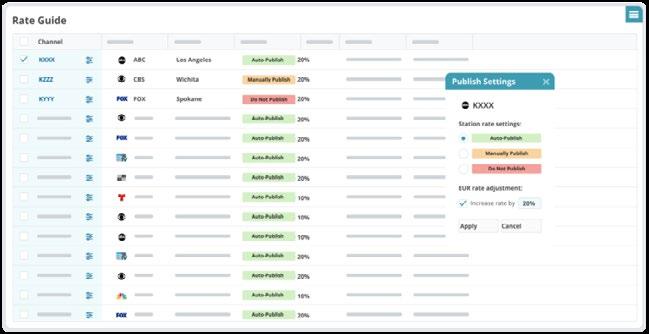
WideOrbit has launched the latest version of WO Marketplace, the sell-side advertising platform that automates ad sales trans actions and provides local TV broadcasters with streamlined access demand-side platforms (DSPs) and agencies.
WO Marketplace handles more than $37 billion in advertising spend annually for over 6,000 stations and networks, including about 90% of local U.S. TV stations, according to WideOrbit. The enhanced WO Marketplace platform introduces WideOrbit’s proprietary optimizer technology, which allows broadcasters to set their own rate guidance to ensure offers meet their rate criteria. Invisible to buyers, broadcaster-defined rate guidance is used to match buyer offers to the seller’s rates for maximized revenue.
z For additional information visit www.wideorbit.com.
Matthews Studio Equip ment’s BM1 Bulb Mount Kit is designed to enable greater versatility and support im proved grip compatibility when working with professional battery-powered LED bulbs.
The kit comes with four Mat thews BM1 Bulb Mounts made of sturdy, lightweight, matteblack molded nylon. Each has a standard lamp socket thread (1.25-inch outer diameter) to hold a single E26/E27 medium LED bulb. At the other end, a standard 1/4-inch-20 female threaded insert is ready to accept a micro grip pin, scissor clamp or micro grip rod. The BM1 Bulb Mount Kit is available through the Matthews worldwide dealer network. F z or additional information visit www.msegrip.com.

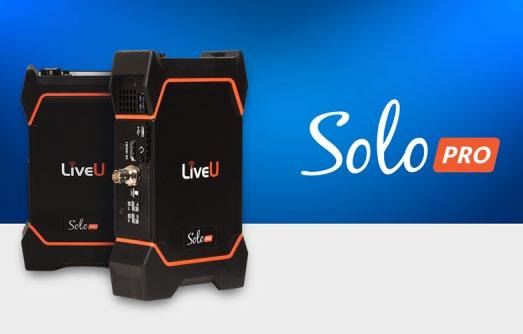
LiveU’s next-genera tion Solo PRO portable bonding live encoder combines professional 4K and HEVC video quality and high reliability. The Solo PRO combines up to six IP connections—four 4G/5G cellular modems, Wi-Fi and LAN—leveraging LiveU’s patented LRT (LiveU Reliable Transport) technology. Enabling a streamlined cloud production with an easy setup, the LiveU Solo PRO can be used for any type of live event coverage, indoors or outdoors.
Solo PRO supports content creators distributing on all live platforms, including Twitch, Facebook, YouTube, Vimeo and TikTok. Weighing just over 2 pounds, the LiveU Solo PRO is a compact, portable unit that can be taken anywhere. Streaming up to 4Kp60 resolution in H.264 or HEVC, the Solo PRO’s HEVC capability offers the same quality in half the band width of H.264, or twice the quality in the same bandwidth.
z For additional information visit www.liveu.tv.
Kiswe has launched its cloud-based Studio Switcher designed for media producers and broadcasters looking to move fully into the cloud to create live streams without purchasing traditional video production hardware. The Kiswe offering is a production suite of cloud-based solutions that covers the entire value chain of production and delivers output at massive scale.
The Kiswe platform has been used to cover a variety of large events, including productions of BTS, Justin Bieber, Queen, PGA Tour, NBA and ESPN. The cloud-based Switcher allows producers to switch among more than 10 high-quality sources, add mix effects and graphics and distribute the production across a wide selection of channels. Kiswe Studio also offers dedicated resources around the globe to ensure tech nical, product and operational excellence.
z For additional information visit www.kiswe.com
while editing; I just use the adjustment clip feature, and it’s applied to the clip and every thing below it on the timeline.
footage down on the timeline and quickly make an edit that is polished and looks great. You can also sync the multicam footage, which is huge for us when we want to cut something in short order. The cut page has a learning curve, but once you become profi cient in it, you save so much time on shorter content and quick turnaround deliverables.
By Joshua Miller Founder and CEO C&I Studios & C&I FilmsLOS ANGELES—From C&I Films comes our latest short film “From DC, I Love You,” which is part of our anthology “To the Cities that I Love.” The series chronicles relationships and how they come to an end, with each short film taking place in a different city around the world.
The film was edited and mixed in Los Ange les, with color grading and the score complet ed in Los Angeles, and media management in New York City, all supported by DaVinci Resolve Studio, Blackmagic Cloud and several Blackmagic Cloud Store Mini network storage solutions.
DaVinci Resolve Studio version 18 is a game changer for us with collaboration getting so much stronger, and the Blackmagic Proxy Generator is like a secret weapon for us. We instant ly make proxies and quick ly get them online, making it efficient and precise down to the megabyte.
While editing “From DC, I Love You,” the 2D and 3D titles feature really helped. Being able to put in a title or a scratch title (and look nice without having to know motion graphics, as our motion graphics animation team is often tied down) all from the edit page is big for us. With more tools moved to the edit page, my workflow is more streamlined. For example, I don’t have to jump to the color page
We had several types of footage on this project; editing different footage on the same timeline and having DaVinci Resolve Studio seamlessly go from H.264 to ARRI, etc. was a huge help. The fact we can now make more timelines and tab through them is insanely impactful. When we open a DaVinci Resolve Studio project, it could have 20-50 timelines, so the tab timelines are everything to us.

While the bulk of the editing was done in DaVinci Resolve Studio’s edit page using the DaVinci Resolve Editor Keyboard, the cut page was also used in conjunction with the DaVinci Resolve Speed Editor for the film’s trailers, promos, and social media.
One of the biggest things we use on the cut page is the dual timelines and automatic trim tools. With the cut page, you can throw your
I always knew DaVinci Resolve Studio was synonymous with color, but once I saw it could edit and the timelines looked similar to the linear-based editing I know and love, I made the jump. Now, DaVinci Resolve Studio can do everything at once. I don’t have to change to a different program for audio, color or visual effects. It’s that powerful. l
Joshua Miller, founder and CEO of C&I Studios and C&I Films, is an award-winning Directors Guild of America member who has been writing, producing, and directing for over 15 years. His vision and passion for storytelling has translated to building successful film and production companies. Crafting stories through compelling characters, finding ways to clearly display inner turmoil, and causing audiences to challenge their mindsets are hallmarks of his films. Joshua produces and distributes original television and film productions. Reach him at 323-844-3326 or contact@c-istudios.com. For more information visit https://c-istudios.com
For additional information, contact Black magic Design at 408-954-0500 or visit www.blackmagicdesign.com.

MIAMI—For more than a decade, Telemundo has been a leader in providing original Span ish-language content for direct-to-consumer platforms, delivering more than 14,000 hours of original content to streaming partners last year alone. Additionally, our sports brand, Telemundo Deportes, is the designated home for Spanish-language coverage of the world’s most popular sporting events.
Given Telemundo’s global presence and its three distinct brands for sports, entertainment (Telemundo), and news (Noticias Telemundo), it’s become imperative in the last few years for everyone—from graphic artists to producers and production assistants—to have complete access to our graphics database. There, they must be able to fully customize templates, execute segments quickly and efficiently, and integrate data for use on social media. For the last two years, Flowics Graphics has provided these capabilities and more.
Before choosing Flowics, Telemundo was planning to switch to a more flexible product that would allow us to maintain cohesive graphics packages across our software applica tions. Unfortunately, while the product we had used before managed to keep our third-party and post-production packets the same, it could never do so with our social media packets. Ad ditionally, we needed better data integration for live stats for sports.
Flowics Graphics easily achieved this—for one, the customization options enabled us to literally copy and paste templates from one third-party software to another without errors. The data integration was also more fluent and quicker, allowing us to link our social media accounts directly to the platform. Stats data did not have to be linked to social media, either— the data could be integrated with
third-party companies by feeding them our templates directly from the cloud.
Using Flowics Graphics in this way, we sig nificantly cut down on the length of time to prepare graphics. The platform reduced errors because the data integrated bypassed human intervention in the middle. It also improved broadcast quality because we now have a lot of more data available than what we could do manually.
For example, we’ve used the Flowics platform in our coverage of the Premier League, the Mex ican League, the Olympics, and the FIFA World Cup. For the World Cup in particular, we use Flowics Graphics in both original and special programming, like the Women’s World Cup for under 17 and under 20. With other platforms, it used to take us months to design and integrate data for our FIFA coverage. With Flowics, we can do it in less than five days.
Because Flowics Graphics gives every producer an individual account to set up and execute segments in the cloud, the platform provides everything the team needs from any where in the world.
This function became critical when I got Covid in the middle of the Tokyo 2020 Olym
pics last year. Fortunately it was mild but I did have to stay home, but in just 2-3 days, I was able to run a whole social media segment from my house with just my computer, which was connected through the phone with the line producer. With any other platform, this process would have been far more compli cated for me and the other team members working remotely.
Overall, Flowics Graphics has given my team the flexibility to create from anywhere with full customization, data integration, and efficiency of execution. We are also impressed with the service—Flowics is always just one phone call or email away, and they respond su per quickly to all our needs. We are grateful for their help in making Telemundo a recognized superpower within broadcast. l
Jaime Peñalosa is a graphics producer for Telemundo Deportes, a NBCUniversal Telemundo Enterprises brand. Based in Miami, he has been with the company for over seven years, where he collaborates regularly with show producers, digital leads, artists, and other team members on edito rial content for linear and nonlinear productions. He can be reached at info@nbcuni.com.
For more information, visit www.flowics.com and www.nbcuniversal.com.
For the World Cup, Telemundo is using Flowics Graphics in both original and special programming.LARAMIE, Wyo.–In a country where college sports sometimes feel like the pro leagues, our athletics teams perform at levels that always astound me. Their talent, dedication and overall engagement are in line with our university’s commitment to developing and supporting an environment that promotes growth as well as academic and athletic excellence. Our mission is also to provide an outstanding fan experience; one that encour ages and engages our community.
As a member of the Mountain West Con ference, University of Wyoming is proud to be part of an institution with many achieve ments. One that is particularly notable is that the MW was one of the first to establish a sports television network dedicated to the intercollegiate athletic conference. At Wyoming University, I work with a full-time staff as well as a team of freelancers, some of which are our own students. Together we manage all the video needs of our athletic department whether it be live broadcasting, video board shows, streaming or social media.
In fact, we broadcast more than 70 live games annually on the Mountain West Net work. We also work closely with AT&T Sports Networks to air our games to 10 states and broadcast to international audiences. Some games are streamed OTT-style to platforms including YouTube.

In an effort to really enhance our produc tions and improve fan experience, we recently re-evaluated our video graphics require ments and decided to move to a platform that provided us with more functionality and ease of use. Based upon my prior experience with the technology, we decided on the Ross Video xPression real-time motion graphics generator. I have worked with other character and graphics generators over the years, all of which offered efficient technology and did a respectable job, yet xPression was a far more viable solution for us.
Ross xPression has really changed the way we broadcast to—and engage with—our audience, giving us far more flexibility in the way we present graphics, athlete stats, athlete bios and headshots, score bugs and much more on the screen.
For example, our video team can quickly tap into the XML stats file that is often creat ed courtside. This allows our operators to pull stats in real-time, placing on-screen graphics that provide our audience with much more information about the players, the game, etc. Certainly, we could do this all before with our previous graphics platform, but it was a far more manual process. Everything is automated now, saving us time and removing the chance for errors. This has also helped us move from needing a fully trained technology professional to having our students run the graphics platform.
Built into our master control room, the workflow is connected to our switcher and network video interfaces and sources, with touchscreen and Ross Dashboard control. The operator and director work together to pre-plan certain custom and pre-recorded broadcast segments including graphics for pre-show athlete bios, halftime athlete pro files or end of season scenarios. During the live game, the graphics we push to the screen really depend on how the game is going, and
this is where automation has really helped. We set operators up with prebuilt custom pages and with a few button pushes, graphics can be loaded on the fly whether it’s athlete standings, starting line-ups or stats. Some thing this powerful really shouldn’t be so easy to use.
We always have some students who want to “get under the hood” of the technology. I really enjoy this aspect of my work as it provides me with a teaching role that I know will help the students when they graduate and choose to pursue a tech career. Providing students with this experience not only keeps our students engaged, it also offers on-thejob applied skills, which will help advance their career. l
Dennis Trapani joined Wyoming Athletics in July 2013 as Director of Video and Digital Media, and was promoted to his current role as Associate Director of Athletics in 2021. Trapani oversees the day-to-day operations of the WYO-Vision team and leads all video and production initiatives for the university’s 17 Cowboy and Cowgirl teams. He serves as the lead producer/director for all videoboard shows and streaming/linear broadcasts of Wyoming Football, Men’s Basketball and Women’s Bas ketball games. He can be reached at dtrapani@uwyo.edu.
For more information visit www.rossvideo.com.
Aveco’s GEMINI Media Asset Management solution, for cloud, hybrid-cloud and on-premis es use brings together Aveco’s deep knowledge of the media industry and the latest IT tech nologies. GEMINI fulfills a key part of Aveco’s Create-Manage-Deliver paradigm, operating stand-alone or integrated with Aveco’s Produc tion Automation and Master Control Playout.
GEMINI manages media-and-metadata, pro vides timeline annotations to describe segments, includes speech-to-text transcription, subtitling, markers (e.g. goals), features cloud-based edit ing and integrates with industry-leading editing platforms. Includes workflow automation. Assets are under control across all types of storage — in the cloud, NAS and SAN, video servers, as well as LTO and sleeper-disk archives.
z For more information visit www.aveco.com/en.

Telestream DIVA software makes it easy for organizations to manage digital content across all broadcast, production, and ar chive operations, across multiple locations. DIVA enables business systems—including MAM, PAM, and automation systems—to access content wherever it is stored since DIVA integrates with cloud, disk, tape, optical, or object storage. It also ensures that all content is protected and accessible in disaster scenarios or hardware failures.
The new DIVA Content Server provides a turnkey content management system for all storage devices and automates the lifecycle policies for content assets. Users save money on storage costs while flexibly deploying new storage systems and work flows as needed.

z For more information visit www.telestream.net.


There is a growing expectation today that production systems will be inher ently capable of access from anywhere, supporting everything from remote large-scale production to empowering editors to work from convenient locations or from home. The FLOW workflow tools built into EditShare storage networks provide synchronization between multiple locations, and with the FLEX software that can now be extended to cloud and hybrid solutions out of the box. FLOW supports all the popular software editing platforms and, with the addition of remote desktop software, users can edit in the cloud, flexing capacity and charging to reflect business trends.
z For more information visit https://editshare.com
The new Smart Asset Manager (SAM) in the Ca blecast Community Media platform automates content archiving, backup, and retrieval to sim plify video server storage management. Rulesbased archiving intelligently moves content from the server to alternative storage—such as a SAN, NAS, or cloud storage—if it is not scheduled to be used within a user-specified number of days, while SAM’s rules-based backup feature copies media files to a designated file store for safe keeping. Automatic archive retrieval brings as sets back onto the playout server based on the program schedule, minimizing user effort and helping avoid errors related to missing media.

z For more information visit www.cablecast.tv.
Singular is the Intelligent Overlay Platform for creating and controlling customizable overlays from anywhere, giving users cutting edge tools to create live graphics that can be customized to engage audiences. The solution features a template library with hundreds of free customizable templates from the Singular Template library and allows users to access control interfaces from anywhere in the world via a browser. UNO mobile control offers simple, mobile-friendly control interfaces while Studio is for when a user needs a full rundown. Enterprise accounts get the very best of Singular with cutting-edge features like On Device (client-side) and On Demand rendering. Going Enterprise unlocks enhanced security, analytics, dedicated support plus interactive and adaptive overlays.
z For more information visit www.singular.live.
 By Joseph Murnaghan System Administrator Eggplant Picture & Sound
By Joseph Murnaghan System Administrator Eggplant Picture & Sound
TORONTO—Located in downtown Toronto in the heart of the production community, Eggplant Picture & Sound is a full-service post-production facility and creative studio that provides a combination of video, audio, motion graphics, animation and VFX. We pride ourselves on our ability to handle all of our clients’ post-production needs, with out requiring them to work with different facilities.
Our robust portfolio of offerings prompted White Label Productions, the producers of the lifestyle series “All Star Shore,” a Viacom production for Paramount+ to approach us about shooting the series. The reality com petition series used four cameras recording 24/7 with 13 more on-set ENG style, ulti mately resulting in a staggering 2,500 hours of footage.
We had four weeks to prepare our work flow before shooting began and we needed a solution that would allow everybody on our team to work together and ramp up quickly. Given that we had such little lead time to get the gear and technology in place, we turned to Avid | Edit On Demand to get our work space set up in a matter of days.
The onboarding process with Avid | Edit On Demand is as simple as placing an order and setting up a workspace to get up and running quickly and seamlessly. We pro cessed the footage using the DNxHD LB Proxy workflow, which was then uploaded into Avid | Edit on Demand. The assistants then started the sync mapping process of organizing the hundreds of hours of footage. This is easily one of the biggest shows we’ve ever worked on but Avid | Edit On Demand allowed us to do the job, since there was no way we could have acquired the comparable amount of hardware in time.
The ease of implementing a remote workflow with Avid | Edit On Demand set our team up for success, enabling us to quickly
ramp up post production with a dozen edi tors running on advanced seats working on processing the mass of proxies, which added up to 60TB worth of data.
We also had a team of four assistants and an additional 10 editors running on standard seats through Avid Edit | On De mand, which added up to almost 26 people collaborating on the project. Advance and Standard seats allowed us to save some money on our VMS seats by tailoring the station to the operators’ needs.
With 12 editors working on a project shot in multicam mode, hundreds of megabytes per second are being processed—even in proxy mode—and the playback on the stor age being worked off is very high. The ability for Avid | Edit On Demand to handle this volume of data without any hiccups was also key to helping us complete the project on a tight deadline. In our Avid Edit | On Demand workspace, we had 1.2 million individual files; with more than 10 years of experience managing a local system at EP&S, there was
no learning curve to get things up and run ning with Avid | Edit On Demand, which is powered by the Avid NEXIS | VFS intelligent file system.
Avid | Edit On Demand enables us to drastically reduce our footprint on projects since we don’t have to house 20 in-person editors. As a result, we can open our borders and expand our talent pool and hire interna tionally. Being able to hire remotely has the added benefit of access to artists with the most applicable skills for a project, regard less of location. l
Joseph Murnaghan currently serves as a post-production system administrator for Eggplant Picture & Sound, a full-service post-production facility and creative studio based in Toronto. At Eggplant, Joseph is responsible for managing computer hardware across facilities, maintaining windows, OS X and Linux operating systems, and for devel oping workflows to integrate ever-changing production systems. He can be reached at info@eggplantps.com.
For more information visit www.avid.com
For the production of “All Star Shore,” Eggplant Picture & Sound used Avid | Edit On Demand to streamline post-production on over 2,500 hours of video.
VIDA is a content operating system and the next stage in SaaS library man agement, combining the best of cloud-na tive content operations with predictive, intelligent tools that support today’s media workflows and help users get the most value out of their library. Full VIDA API access allows for widespread integration across Sales force, Xytech, Film Track, Telestream, Colorfront Transkoder, Dolby Hybrik, Aspera, and Signiant. Central Cost Management allows users to connect with partners, suppliers and facilities to centrally manage capacity and localization orders within the EGA vetted ecosystem and to create custom “Virtual Warehouse” with pre-set automation and placeholders for unfinished content. 1-Click Distribution allows users to connect to any broadcaster or streamer with a pre-flight check and simple shopping basket experience.
z For more information visit https://vida.studio/

NVerzion’s NFinity broadcast video server is designed to be a reliable, flexible, and af fordable solution for video ingest, playout, and control. NFinity combines the power of a traditional broadcast video server with custom-built NVerzion automation and control software in an easy-to-use package. Control NFinity with the on-board applications or through external VDCP control. NFinity is agnostic to video file formats, and on-the-fly internal transcod ing, when needed, allows for seamless playout. NFinity channels can play files stored in multiple sub-directories on any number of storage or file systems. It can be controlled locally, remotely, or with its fully functional VDCP interface (both serial and network), and can be controlled by all major automation systems.
z For more information visit www.nverzion.com
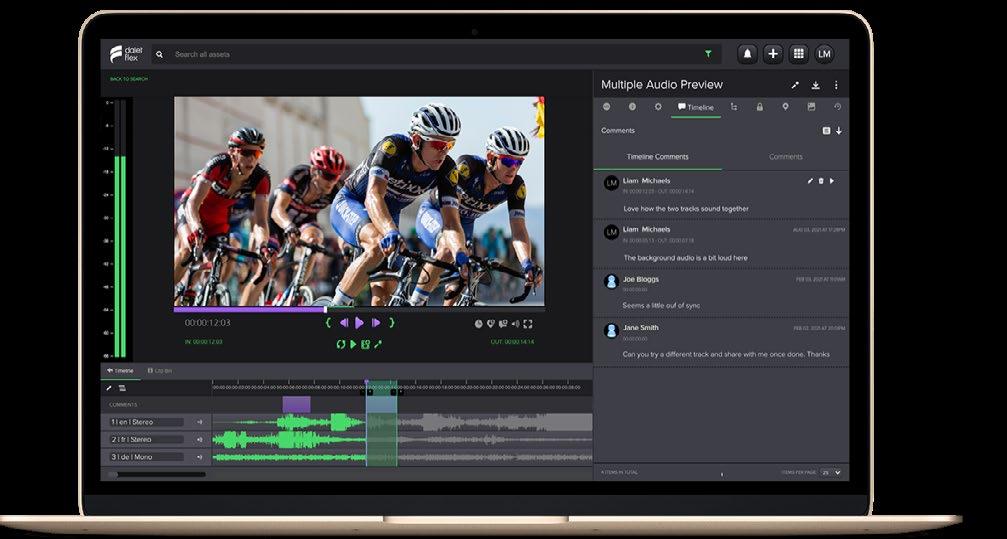

Chyron LIVE is an end-to-end, live video production platform that makes high-quality productions available to content creators through a cloud-native architecture. Users can access the platform to cut/mix live sources, adjust audio levels across feeds, play out PRIME-quality
graphics packages, create unlimited multimedia playlists, and produce live replays with telestration. Chyron LIVE’s interface simplifies the production process and is easy-to-operate via complete touchscreen control, traditional computer mouse-and-click, or even from external control devices. It allows anyone with a laptop or tablet to produce broadcast-quality content on demand.
z For more information visit https://chyron.com

Cinegy Desktop is a universal production tool that provides real-time access to media in Cinegy Archive, along with a powerful suite of tools for logging and editing, and an almost limitless ability to import and export media to third-party non-linear editing and automation systems. Cinegy Desktop runs on standard office IT infrastructure and can be installed on any user’s desktop within a network environ ment, allowing users to collaborate from their desktops without tying up expensive editing

Dalet Flex is a cloud-native media logistics solution used by media-rich organizations such as Arsenal, Audi, the NRL, KCP, Migo, and many more to produce, manage, distribute and monetize content. It features web-based, user-friendly collaborative tools and automation capabilities that have been proven to shorten workflows for review and approval, content library management, multiplatform distribution, and packaging content for localization and OTT by up to 50% and reduce direct costs by up to 70%. It is available at Dalet Flex for teams,
bays. Full system functionality is available from any workplace, editing bay or machine room for maximum workflow flexibility. It provides a MAM Client, logging search, and timeline editing without waiting for render ing—everything is rendered in real-time. Cinegy Desktop is also a newsroom computer system (NRCS) client offering integrated news oriented tools for story writing, pool and story management, approval workflows, integrat ed video editing, voice-over recording, and template based graphics.
z For more information visit www.cinegy.com
as a SaaS, multi-tenanted offering delivering media workflows as a service, and Dalet Flex for enterprises, providing a tailor-made media and content supply chain platform.
z For more information visit www.dalet.com.
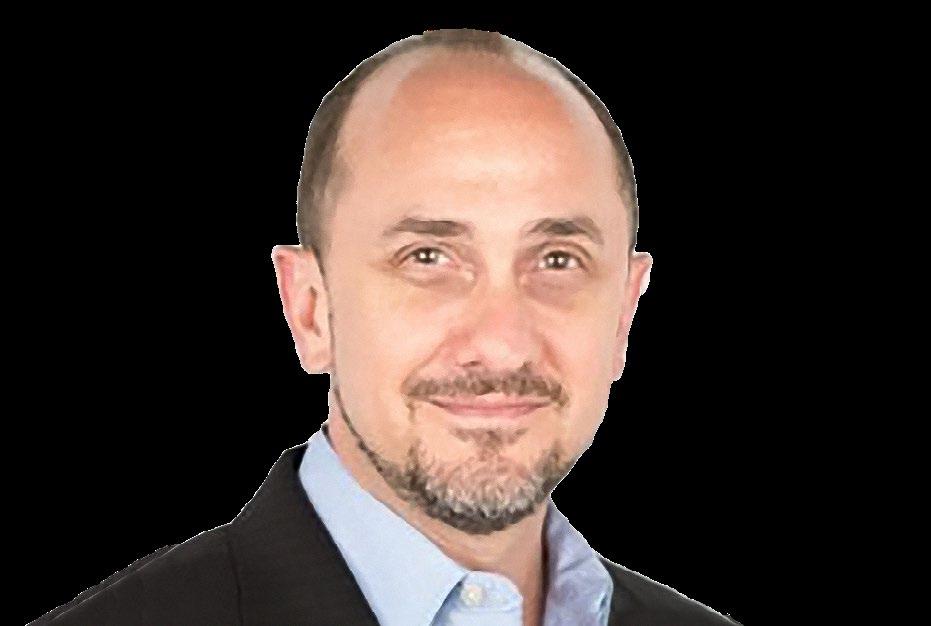
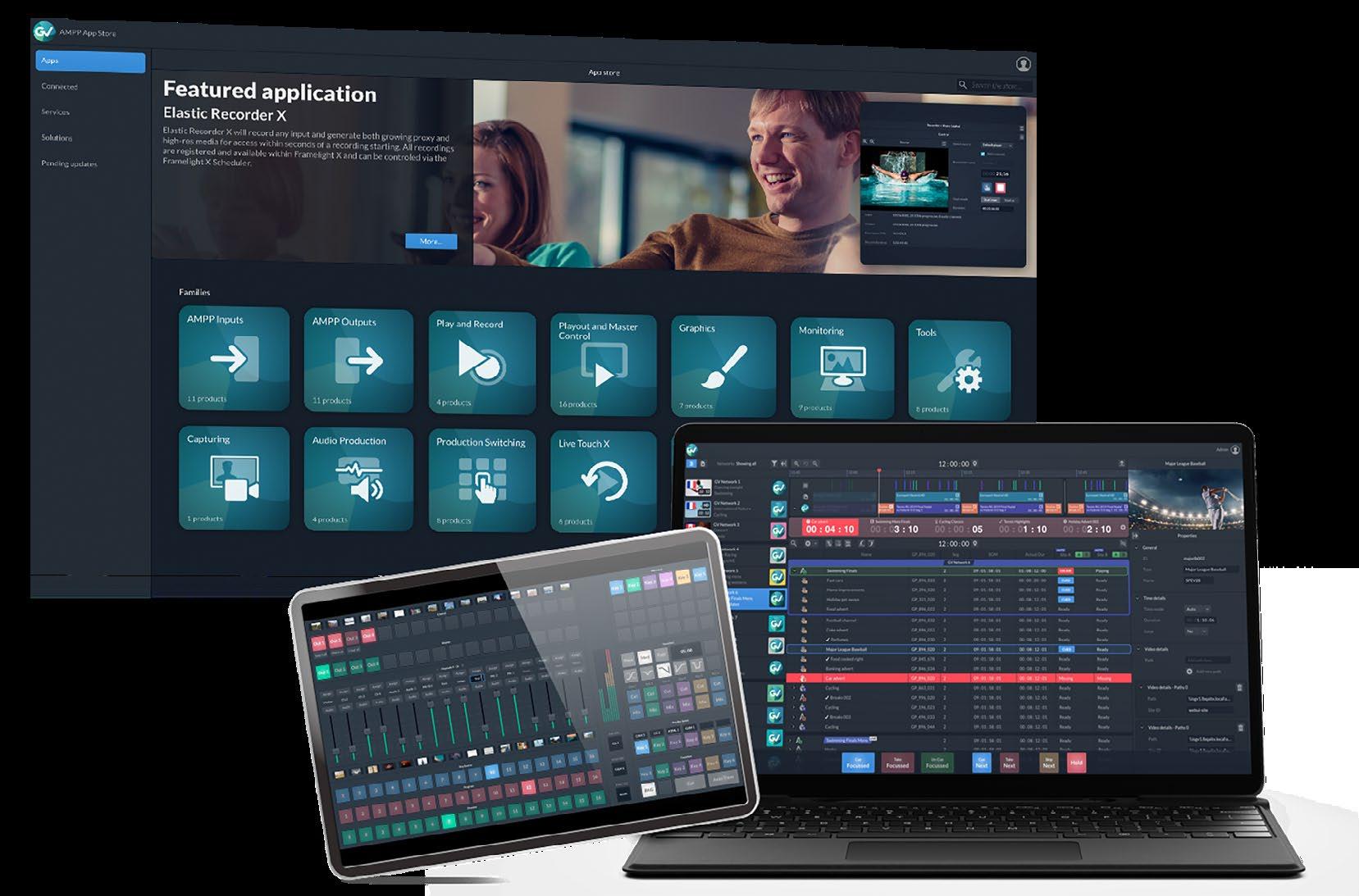 By Gary Schneider Lead Media Systems Architect LinkedIn
By Gary Schneider Lead Media Systems Architect LinkedIn
SUNNYVALE, Calif.—LinkedIn has been on a long journey to build out production facilities around the world that could be interoperable, globally managed, and controlled. We started off with some of the early implementations of IP routing to tie all our facilities together with the idea that we could share media and resources. The goal was to leverage machines and operators for a production independent of where the production, the operators, or the machine were physically located.
In late 2018 we started discussing how to leverage cloud technology within the produc tion environment. One of the key goals was to make the cloud capabilities an extension of the existing on-prem set-up. This meant hav ing cloud devices under a common controller and being able to route cameras from any studio to be processed in the cloud.
At the beginning of the pandemic when all our offices had to shut down, we needed to figure out a way to go completely remote. For high-profile events, we were looking for the level of production that everybody was used to.
With AMPP from Grass Valley as a cloudfirst system, we saw the ability to use cloudbased tools to create a truly scalable and dis tributed production system. In our on-prem control rooms, we had been using a more traditional graphics package, but that wasn’t going to work in a virtual environment. We wanted a graphics package that would allow us to not just work virtually but also to keep our graphics layouts and branding.
Singular.live gave us a simple-touse HTML5 interface that allowed us to use all our existing graphics without tying us into pre-built templates. Initially, Singular.live just provided a pointer to the HTML5 graphics but it became a layer within the AMPP environment that could be pulled up using any
With AMPP from Grass Valley, LinkedIn created a scalable and distributed production system.
of the AMPP live production applications, Live Producer X, Masterpiece X, or K-Frame CSX. After Singular.live developed an AMPP-specific integration, we could see our graphics elements and trigger them indi vidually right from within AMPP. We didn’t have to be logged in to the Singular.live application at the same time. That moved all the controls from a separate application into AMPP. We could either trigger graphics from the AMPP UI or we could create macros with AMPP control and then put those on buttons on an Elgato Stream Deck controller.
By having the graphics application inte grated with AMPP, the cloud-based platform makes it completely flexible in terms of how many people you want operating the production, and where those people need to be physically located, helping us reduce the number of operators required for any given production. Granular control from a separate control panel makes it easy for the TD to con
In addition, the Singular.live
app within AMPP allows for text editing, so if we need to change something on the fly, it’s easy to access from a dashboard and make the required changes in real-time.
Post-Covid, we use a combination of cloud compute and on-prem compute. Depending on the requirements of the production, we are now able to choose one or the other, or both. Whether it’s an HTML5 UI or a Grass Valley Karrera switcher panel, it can all be tied into the system. Having the Singular.live HTML5 graphics integrated right into AMPP means that even with remote productions, we have the flexibility to run the graphics all from a single UI or to have a dedicated operator, at any location, which is great. l
Gary Schneider began his career in feature post production and broadcast, designing and integrating infrastructures to support large multi-service facilities. During his time at LinkedIn, Gary has been building out video production environments with a vision toward multi-site interoperability, leveraging both onprem and cloud technology. He can be reached at gschneider@linkedin.com.
For more information visit www.grassvalley.com.
MediaCeption Signature is EVS’s complete end-to-end live production asset management solution that allows quick content turnaround within any production environment. The solution leverages EVS’ live production servers, which allow users to ingest any type of baseband or file-based content, media workflow management tools, storage system and certified integrations with advanced video editing tools to quickly record, import, manage, edit and repurpose assets. The web-based user interfaces and advanced proxy file management allow users to instantly access content from any location they choose for remote, mul tisite contribution. Key benefits include: fast turnaround for content; a resilient and reliable system; control from anywhere; and secure operations.
z For more information visit https://evs.com
Sony’s new AI automatic production system, A2 Production, is an expansion of its existing Media Analytics Portal. By pooling differ ent AI capabilities from Sony and other companies and integrating them with NavigatorX, Sony’s hybrid cloud asset management and workflow solution, production workflows can be streamlined for file editing, managing, distributing and storage migration. For example, by using metadata generated at image capture, highlights can be automatically generated for sports, and production preparation can be automated. Additional AI-enabled abilities include sports data analysis, subtitling, tagging, and creating multicamera highlight clips.
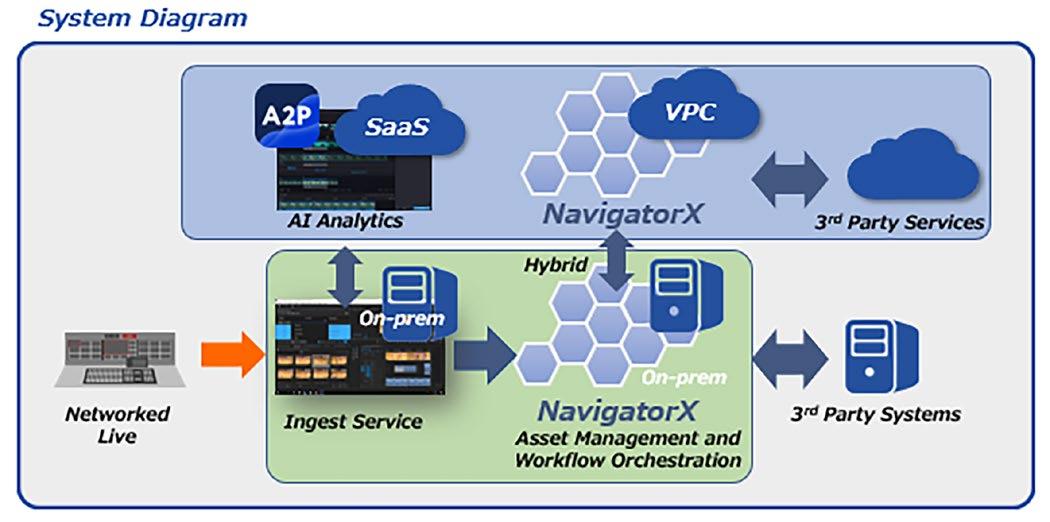
z For more information visit https://pro.sony/en_NO.




Amagi CLOUDPORT is an advanced cloudbased playout system that can be used to ingest content, graphics, and commercials on cloud, and man age live playout using a unified web-based interface. Unlike traditional systems, CLOUDPORT can be deployed much faster, and can reduce the infrastructure costs without compromising on quality. The versatile CLOUDPORT can also be used to support com pletely virtual or hybrid playout requirements.
CLOUDPORT also supports multi-layered graphics rendering with a higher level of au tomation to simplify the graphics playout. Rich animated sequences can be played out as static, or template-driven, rule-based graphics using CLOUDPORT’s graphics ingest and automated scheduling function.
z For more information visit www.amagi.com.
Designed to remove the com plexity of live, multiplatform graphics production and distri bution, Viz Engine 5 introduces “Adaptive Graphics,” a new way to deploy graphics to multiple output formats simultaneously, saving time, pain, and effort. Adaptive Graphics allows design ers to create once and publish multiple times. This templated workflow smartly adjusts
resolution and format to support specific display devices without multiplied resource usage, compromising on quality, or risking loss of readability. Viz Engine 5 offers integration with Unreal Engine 5, The release of Viz Engine 5 also sees the introduction of NDI, with fully embedded tracking data in the NDI stream.
z For more information visit www.vizrt.com
With R&S CLIPSTER, users can edit any type of media in any resolution and create a high-quality pro fessional deliverable that meets stringent, professional delivery specifications. R&S CLIPSTER provides a foundation for post-production vendors to build services upon. Key features include: fast and reliable IMF and DCP mastering; 4K uncompressed playback up to 120 fps; HDR color-processing pipeline; in put any file type and video signal; mix and match codecs alongside uncompressed frame sequences; tools that are designed to make it the gold standard for mastering and distributing feature films and episodic TV.
z For more information visit www.rohde-schwarz.com.

smartWork is a cloud-native, no-codemedia integration platform designed to democratize business processes, empowering non-technical users and citizen-developers to define inte grations autonomously, creating workflows in an agile manner and eliminating point-to-point paradigms. Its common UI guarantees easy access to all applications and services, including any MAM. The no-code architecture enables the design of scalable, future-proof solutions and media services, accessible to everybody everywhere, that can be seamlessly aligned with changing business needs and customer condi tions. Benefits include unprecedented flexibility, seamless and effortless integrations, reduced costs, enhanced team collaboration, improved profitability, accelerated growth and dramatically shorter delivery times. It can be deployed onprem, on any cloud or in a hybrid architecture.
z For more information visit www.tedial.com/products/smartwork.
nxtedition brings all aspects of production, automated live broadcasts, social media and content delivery into a single system inside an intuitive single user interface. nx tedition fine-tuned the most cutting-edge web and microservices technologies and applied them to the broadcast environ ment, providing tools for story ideas, research, planning, NRCS scriptwriting, media management, metadata, transcrip tion, graphics, AI, subtitling, streaming, gallery automation, ingest and social and CMS publishing. By consolidating all this functionality into a single user interface, nxtedition is a robust, accurate and fast solution for acquiring content, turning it around and getting packages out.

z For more information visit https://nxtedition.com.
Built to handle fast-paced new production, Bitcentral originally developed Oasis Media Asset Manager (MAM) to store, search/filter, and retrieve news content. As station groups wanted to share assets between facilities, Bitcentral created Oasis Sharing, which allows geographically dispersed teams to quickly perform federated searches of near-line and deep archive media. Oasis Sharing then seam lessly manages the transfer of media assets. In addition, Oasis Archive offers cost-effective tiered storage solutions with both on-prem ise and cloud-based options. Its integrated, accelerated HTTP transfer app with parallel processing upload/download capabilities is also designed to work with weak or interfer ence-ridden mobile internet and Oasis’ search engine facilitates speedy results across all raw clips, works-in-progress, and the complete archive of every station in the sharing group with efficient lifecycle asset management.
z For more information visit https://bitcentral.com/core-news/oasis


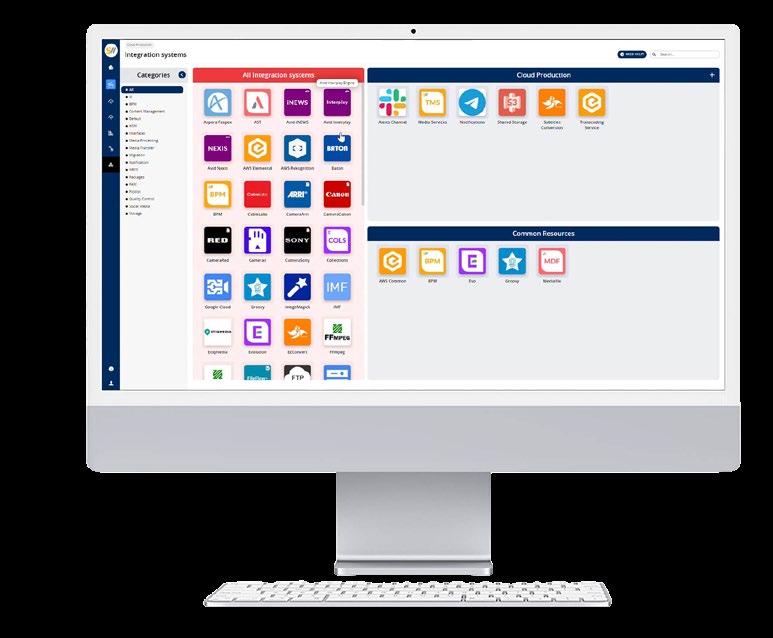
Cinegy has hired Tab Butler, a for mer executive with the MLB Net work, as M&E advisor to expand the company’s presence in the U.S. market. Prior to the MLB Network, Butler served in senior sales roles with technology vendors such as Grass Valley, EMC and SeaChange International, as well as at NBC. He received two Emmy Awards while at NBC, and seven Emmy Awards and one Edison Award while at MLB Network.
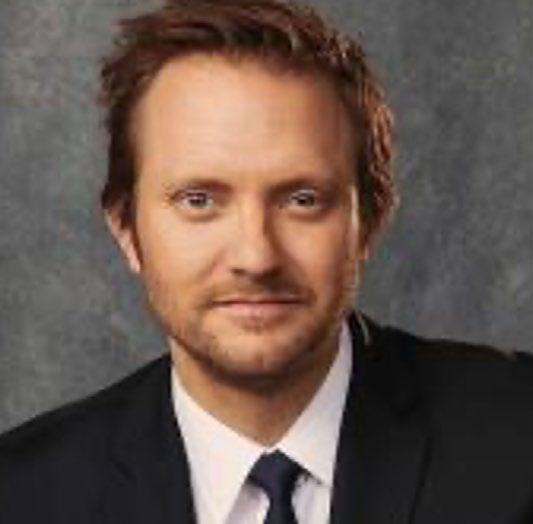
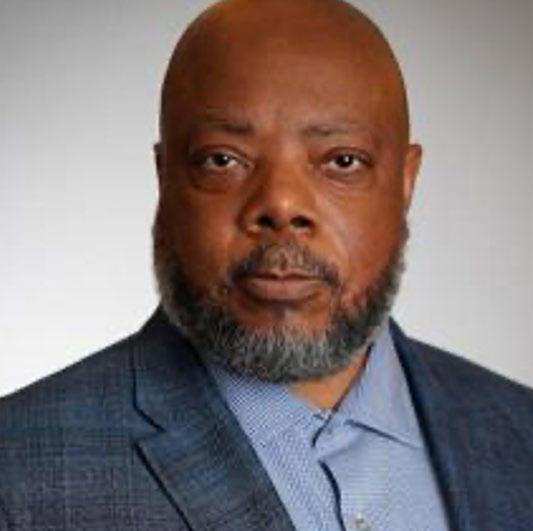
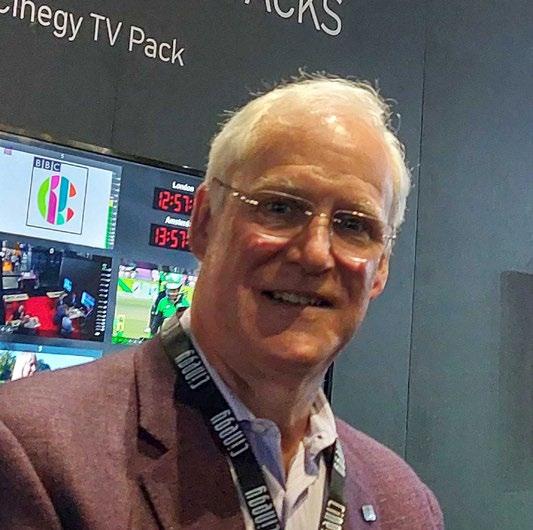
 BARRY SINGER Vice President of Sales Utah Scientific
BARRY SINGER Vice President of Sales Utah Scientific
Utah Scientific has promoted Barry Singer to VP of sales. He previously served as the company’s western regional sales manager. In his new role, Singer will primarily manage and work with the sales team and channel partners. Singer has more than 35 years of experience work ing with manufacturers such as Ampex, Tektronix, Grass Valley and Ross Video. He also owned and operated a dealership and systems integration company.
Gray TV has promoted James Finch to VP of News Services. For several years, he has managed the station group’s news vendor partnerships and assisted Gray’s stations with content and resource sharing as the director of News Services. In his new role, Finch will lead Gray’s new in-house news training program and its region al content producers. Finch is a graduate of the NABEF Broadcast Leadership Training Program.
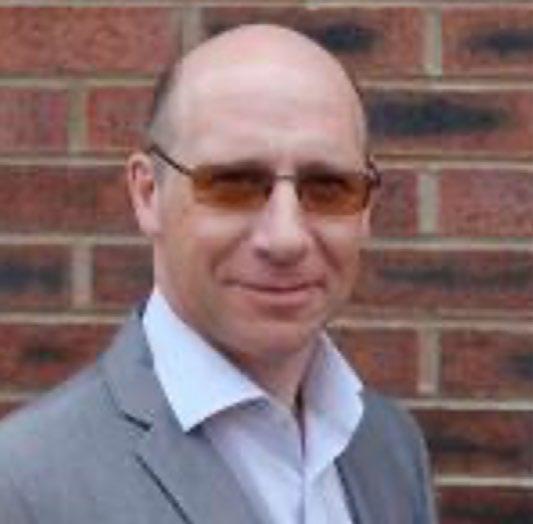
Michele Wright joins the Society of Motion Picture and Television Engineers as director of business development and outreach. She will lead the marketing and sales teams and partner with SMPTE staff and volunteers to guide mul tiplatform marketing and outreach to new and diverse members and partners. Wright’s experience includes pharmaceutical/biotech sales and business development for Fortune 100 companies and an international nonprofit organization.
KEVIN PLUMB SVP, Media Engineering for DMED Disney
Disney has promoted Kevin Plumb to senior VP, Media Engineer ing in the Technology team at Disney Media & Entertainment Distribution (DMED). He leads the team responsible for the design, engineering and implementation of systems that support the creation, production and distribution of Dis ney content. Plumb has 25 years of experience with Disney, ABC and ESPN. Most recently, he was the VP of Media Engineering & Interna tional Operations for DMED.
CHARLES BLESSING Chief Executive OfficerNUGEN Audio has promoted Charles Blessing to CEO, replacing Paul Tapper, who will step back to focus on his immersive gaming brand Fruity Systems. Tapper will continue to serve as CFO for NUGEN Audio. Blessing, who previously served as the brand’s chief technology officer, joined the company in 2013. Sophie Guest was also promoted to chief mar keting officer and will join Blessing and Tapper on the company’s Board of Directors.
 SCHWARTZ President, CW Entertainment
SCHWARTZ President, CW Entertainment
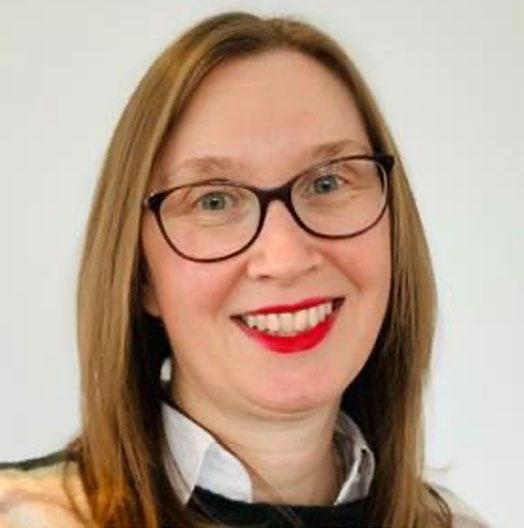
Brad Schwartz has been named president, CW Entertainment for The CW Network. Most recently Schwartz was president of Pop TV where he spearheaded the rebrand of the TV Guide Network to Pop TV, growing audience and revenue for six consecutive years. He was also responsible for landing Pop TV’s flagship original series, “Schitt’s Creek.” Schwartz began his career working at “Satur day Night Live.”
Rise, an advocacy group for gender diversity in media technology, has named Daniella Weigner, co-founder and managing director of Cinegy GmbH, the recipient of the 2022 Woman of the Year Award. The Woman of the Year is selected by Rise Advisory Boards and pre sented to an inspirational woman who has made a significant contri bution in her field. Weigner is being recognized for supporting Cinegy staff in the Ukraine, as well as more than 400 broadcasters there.




















